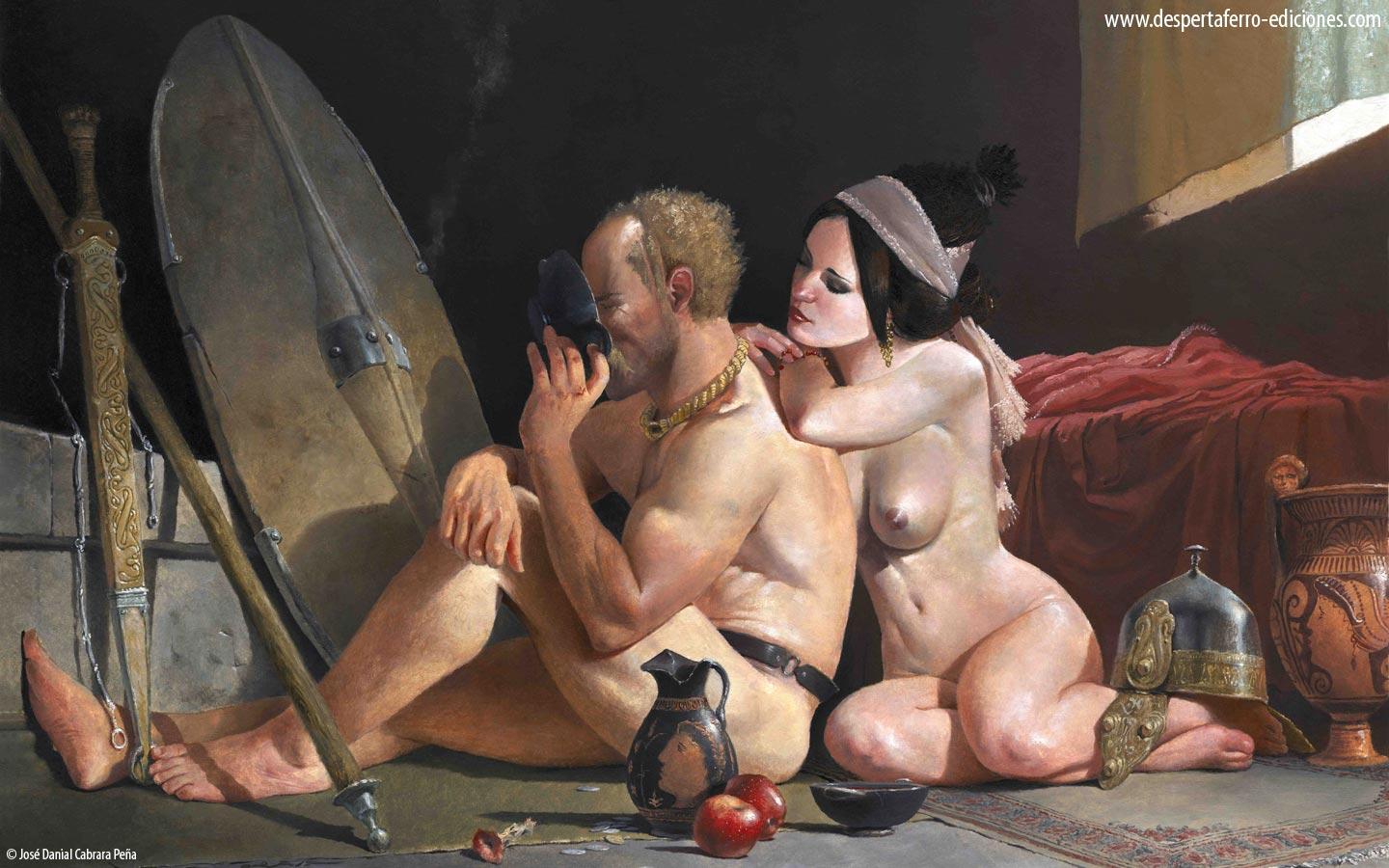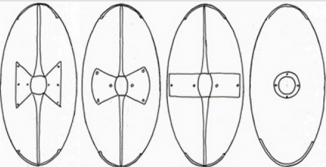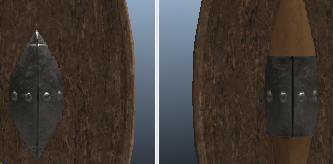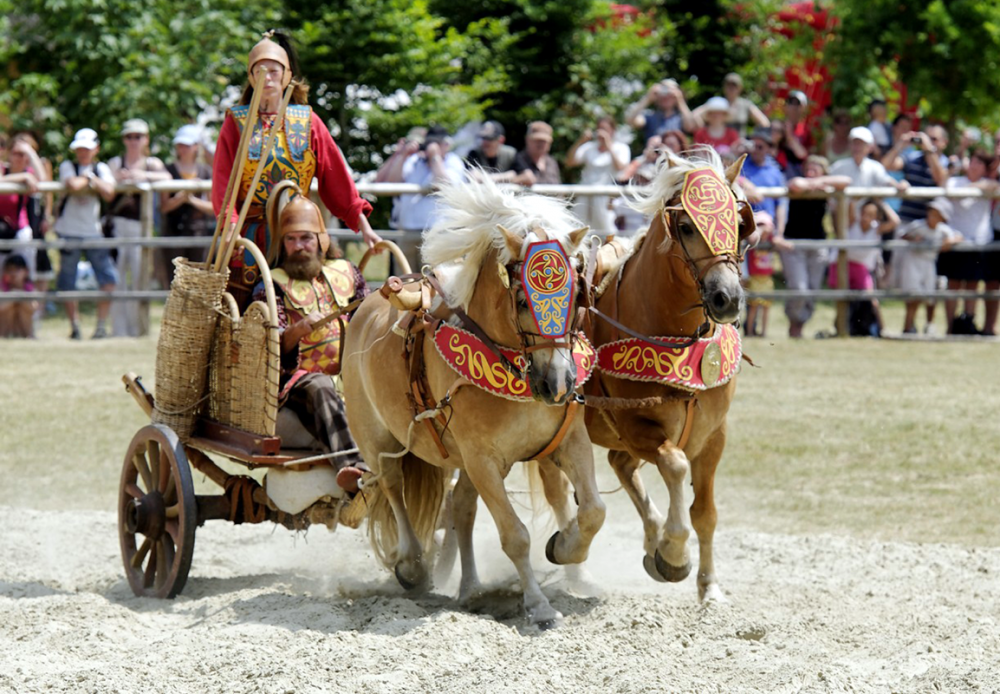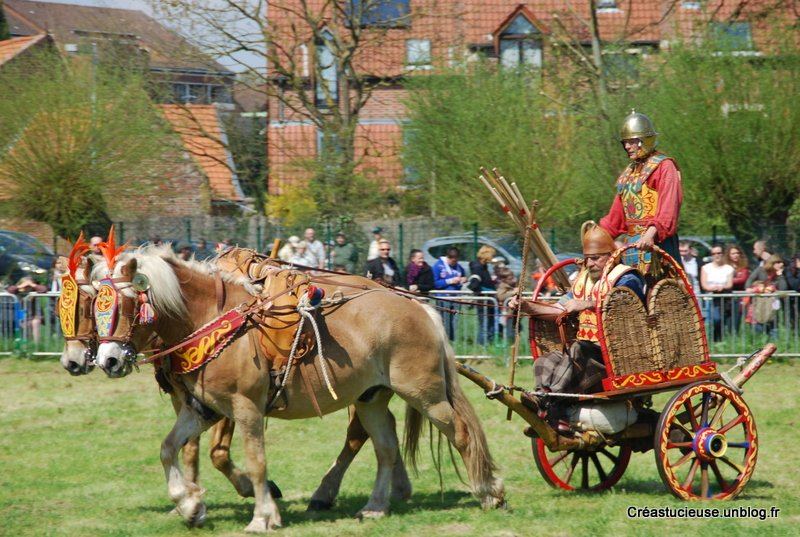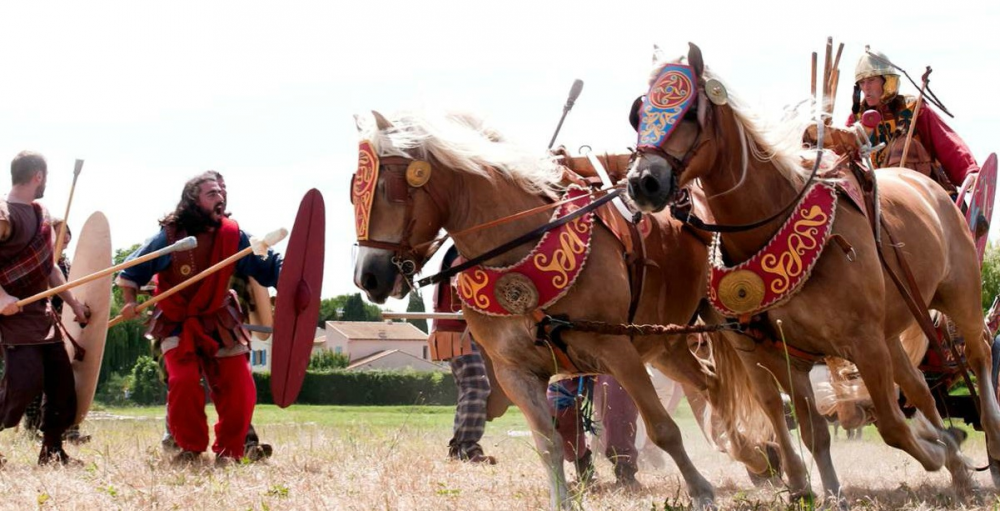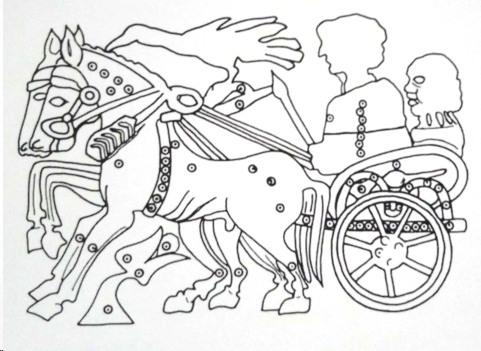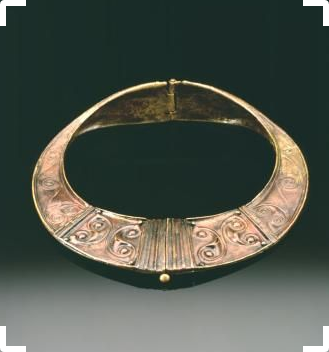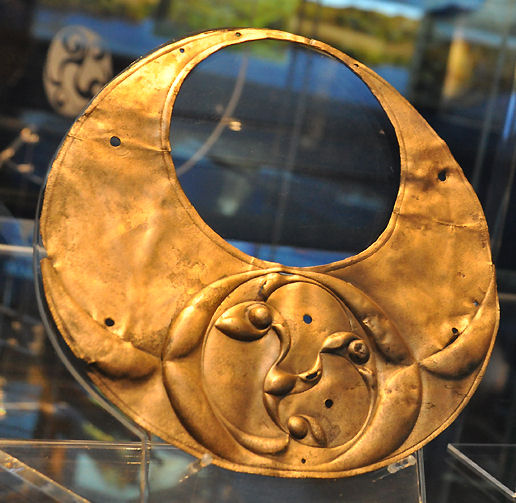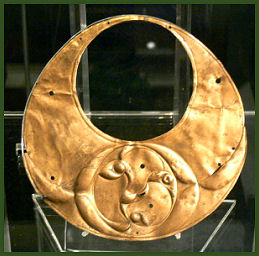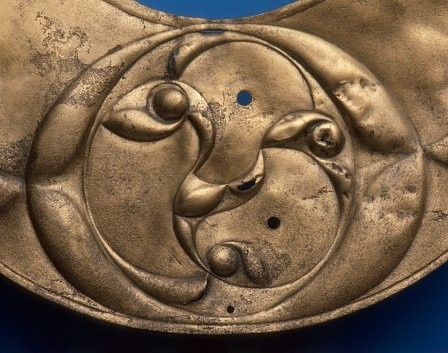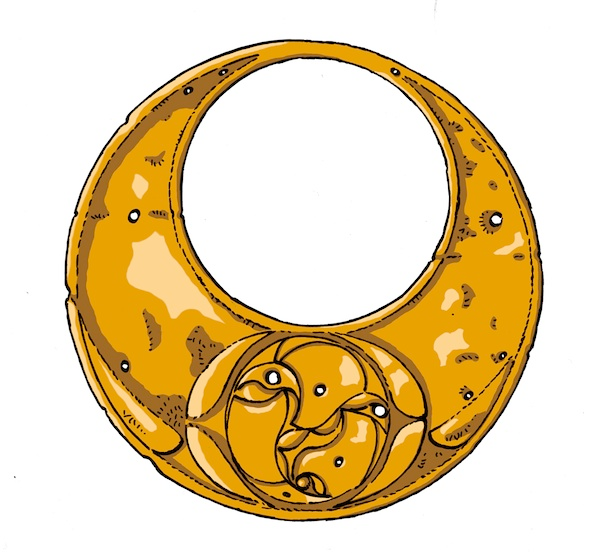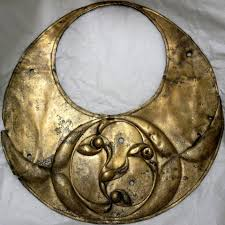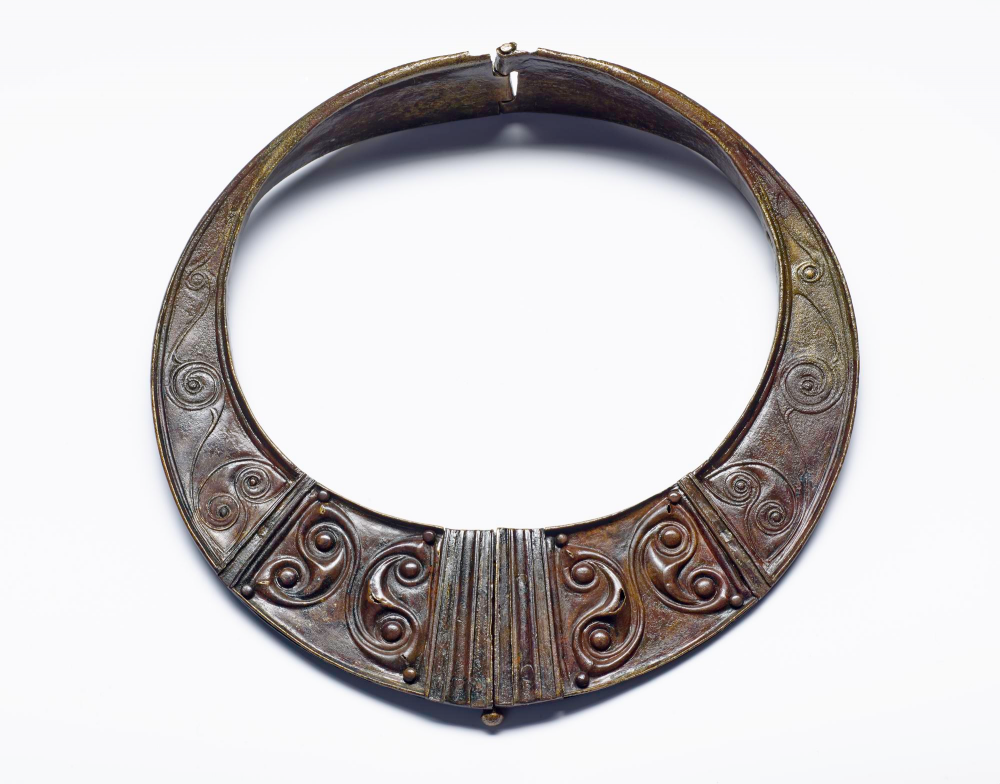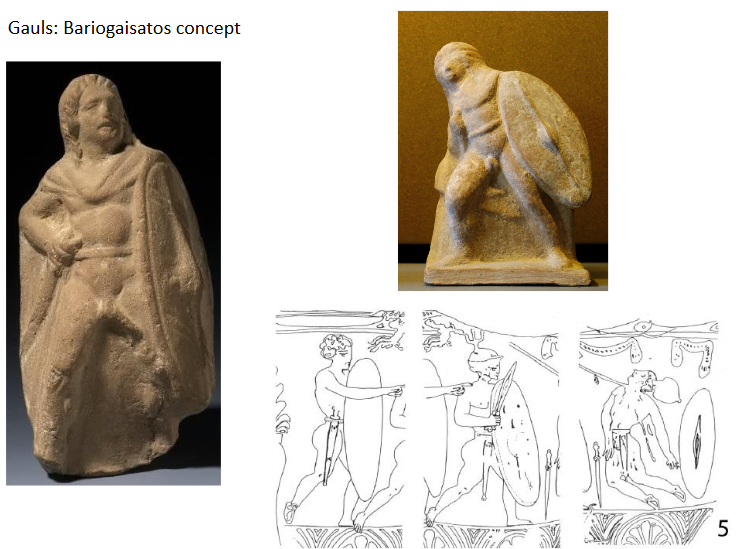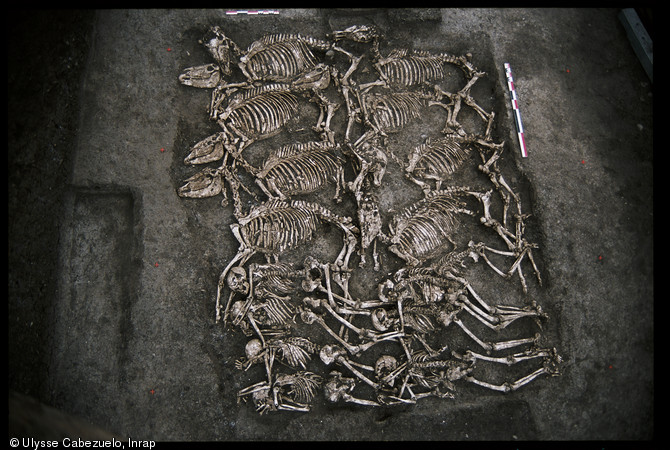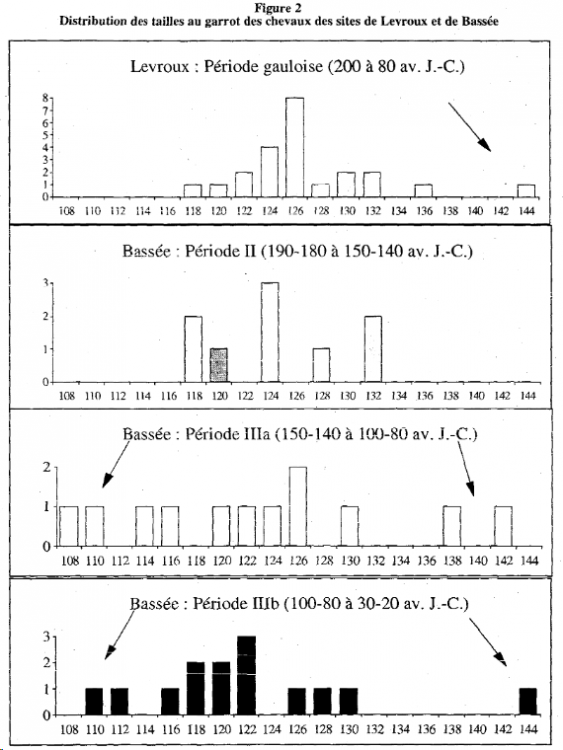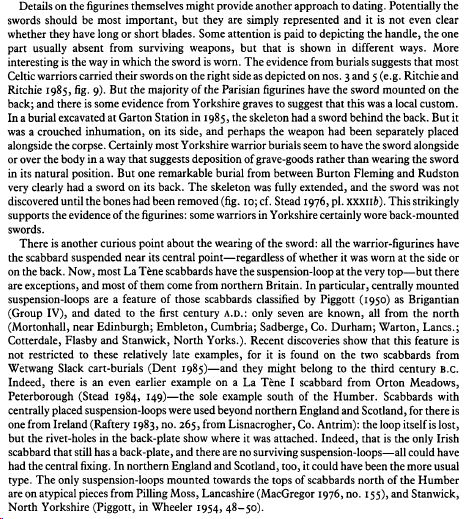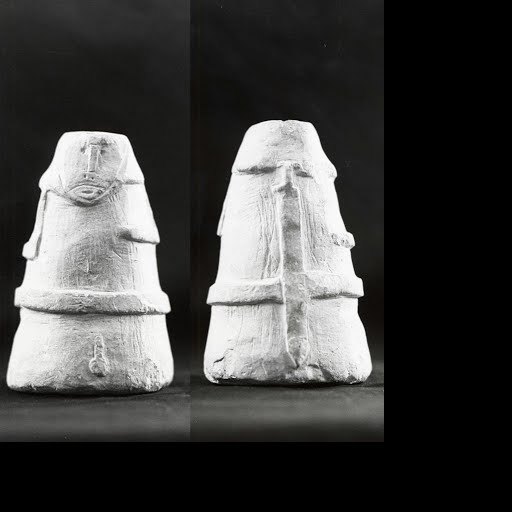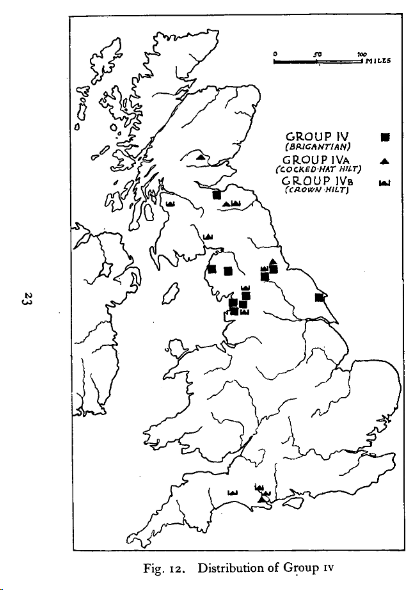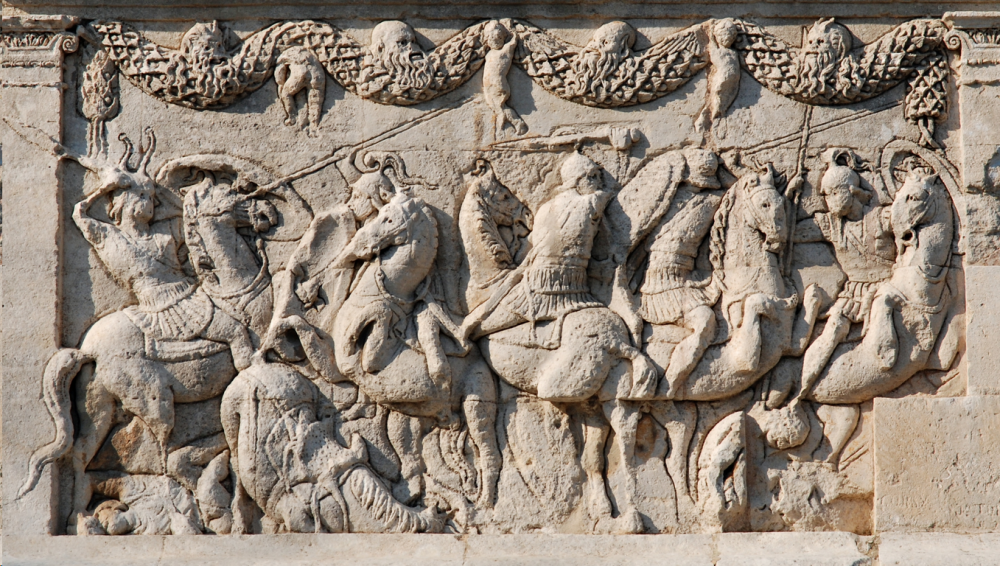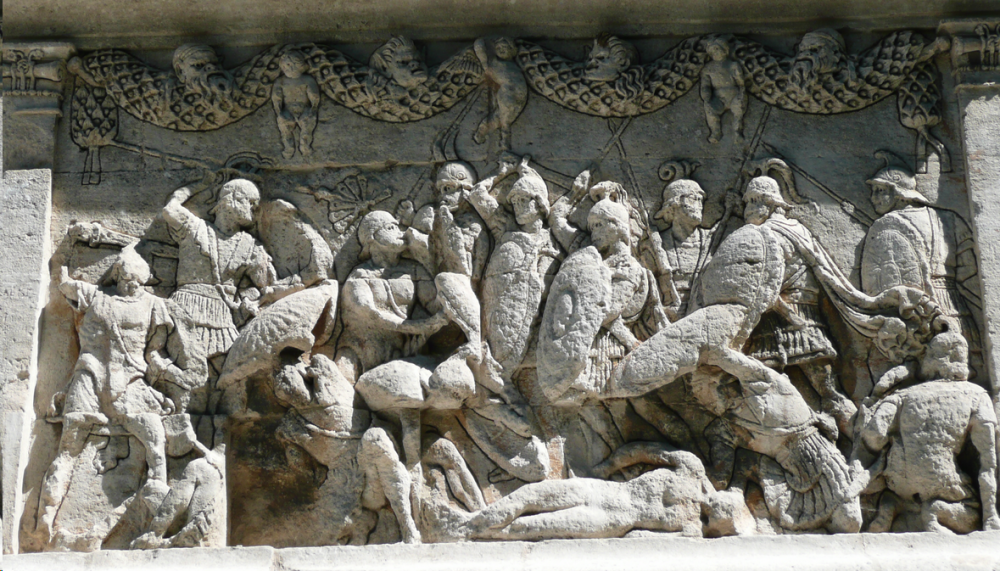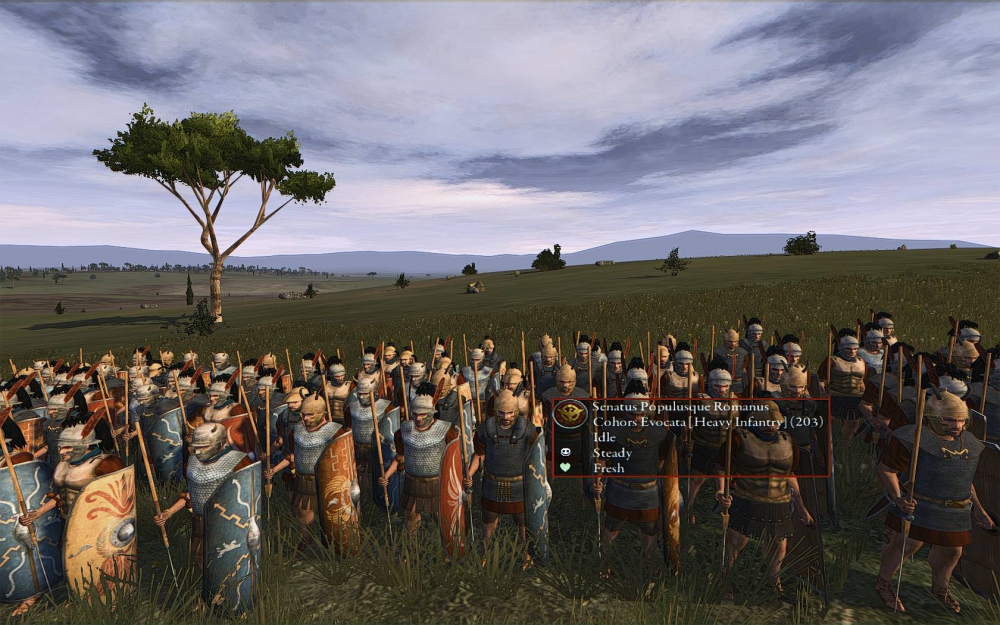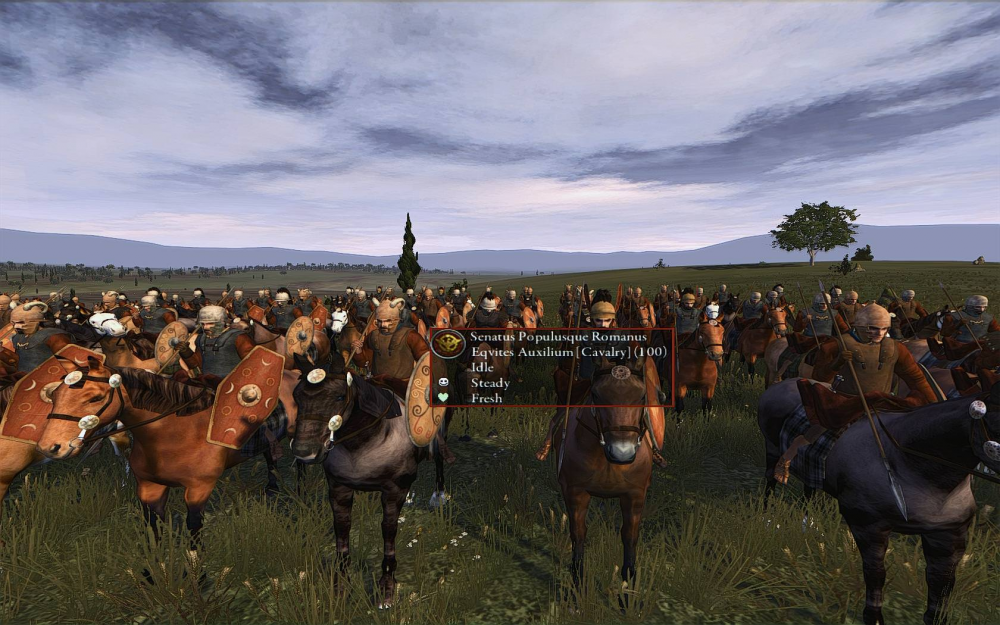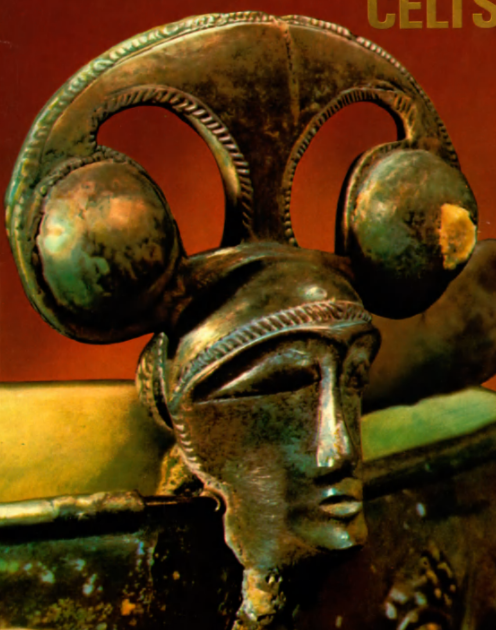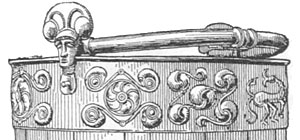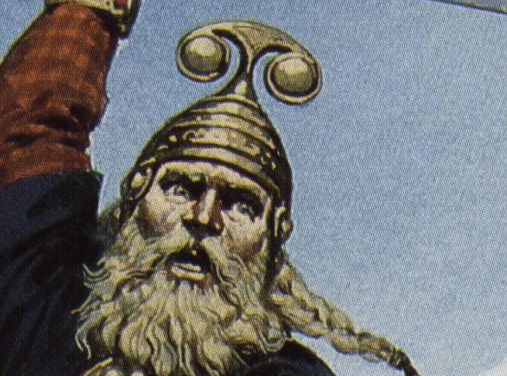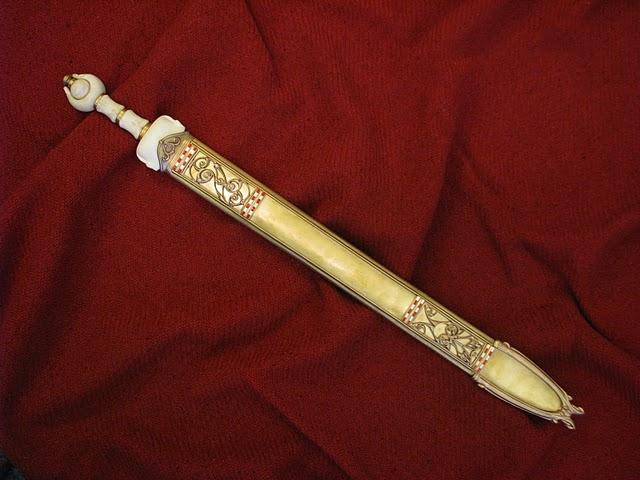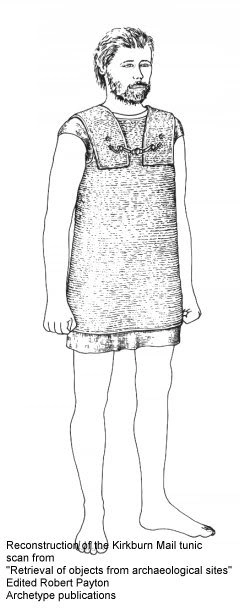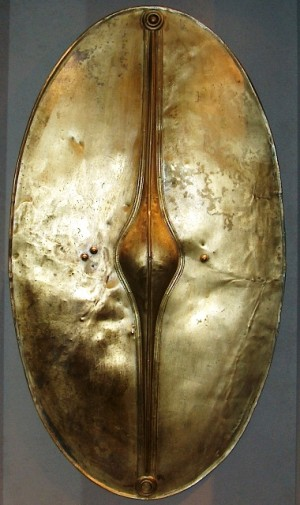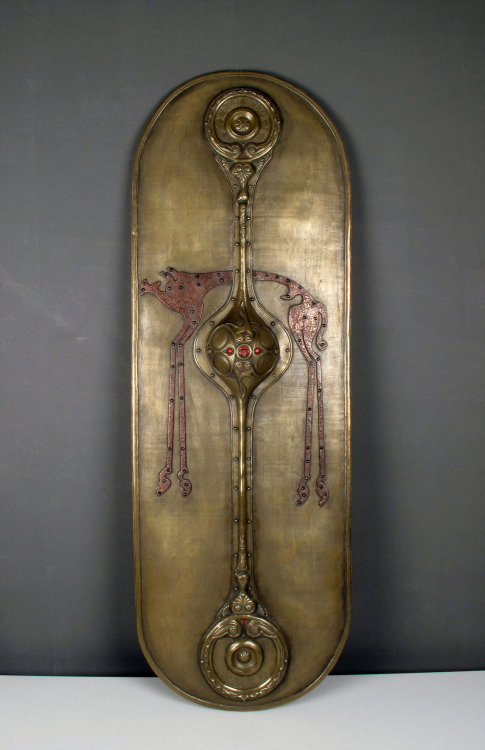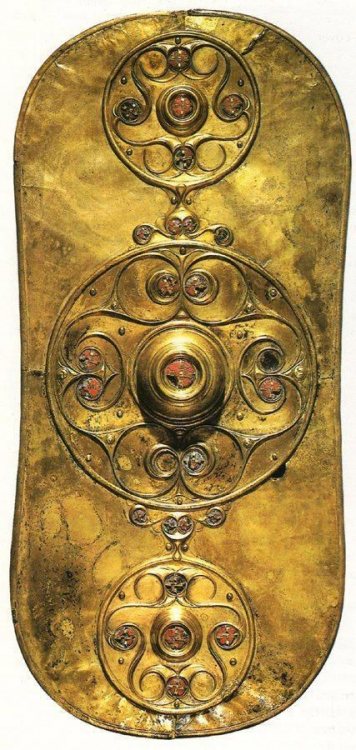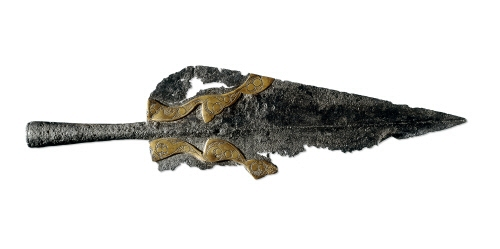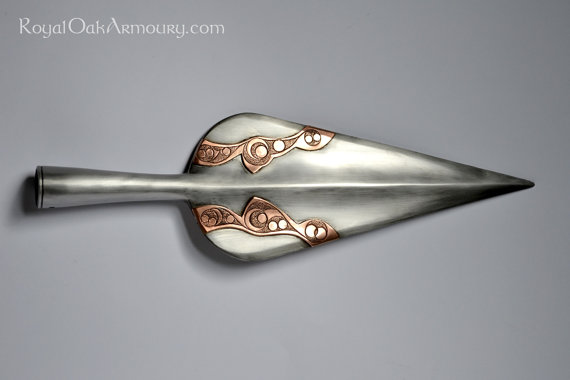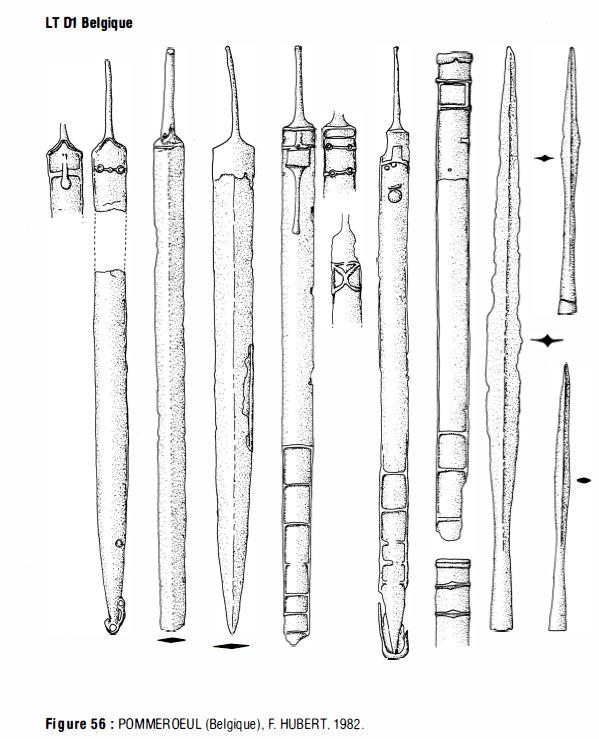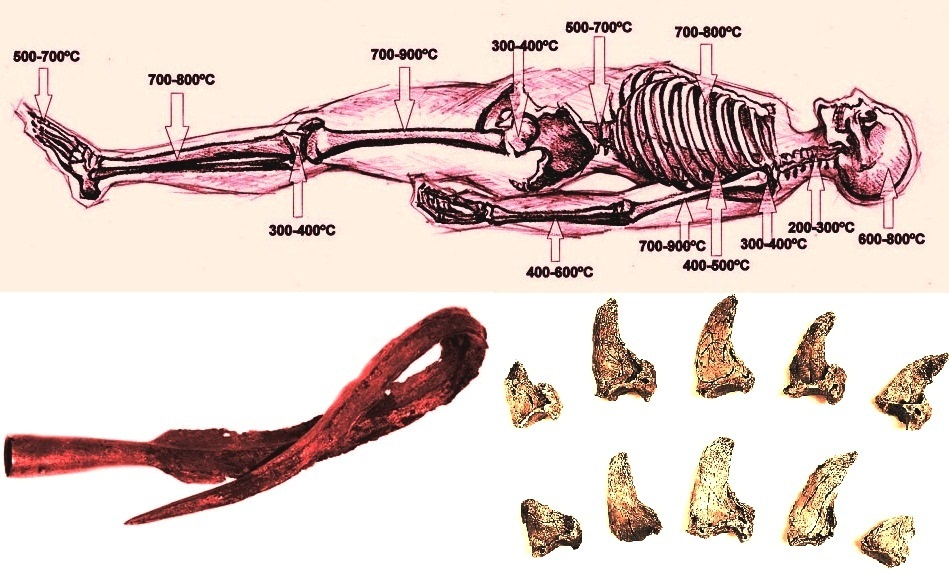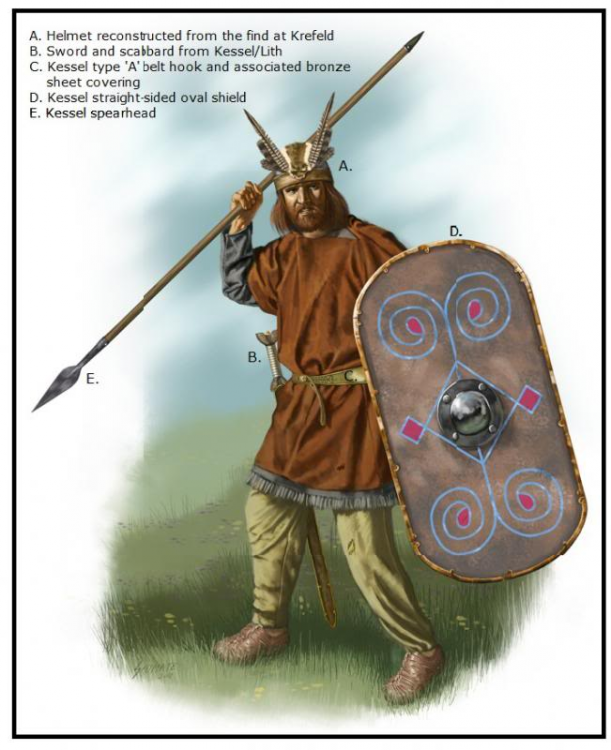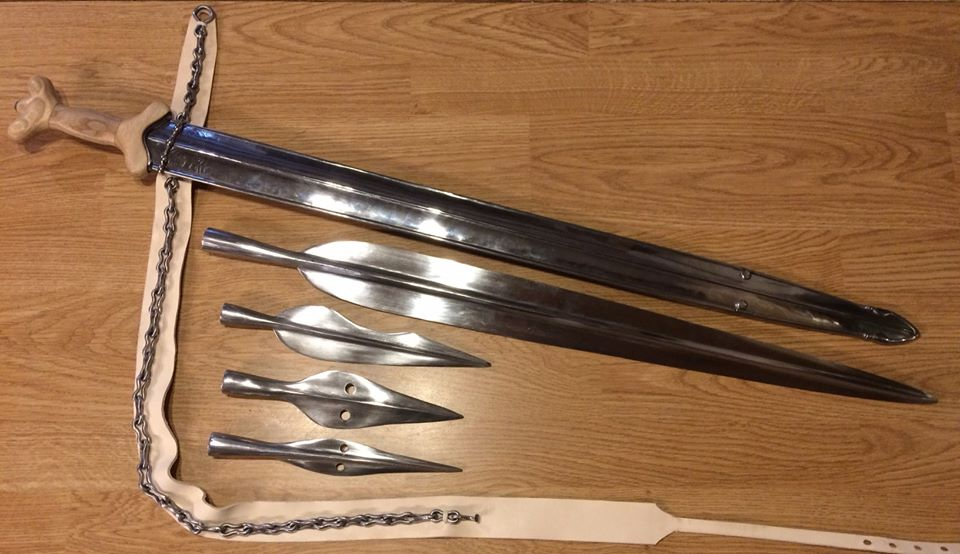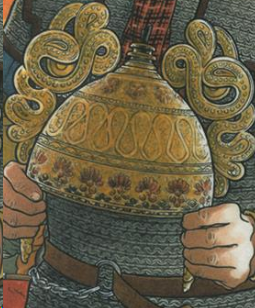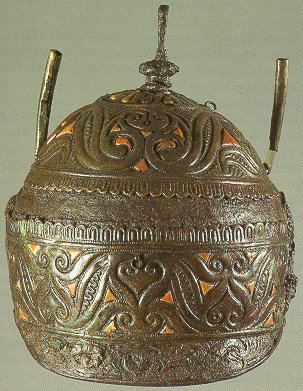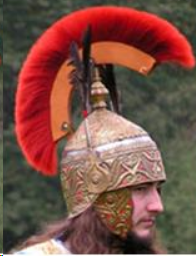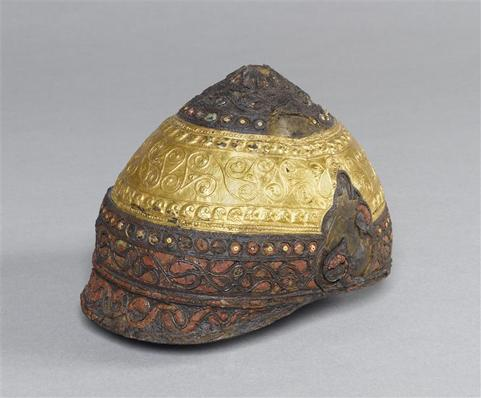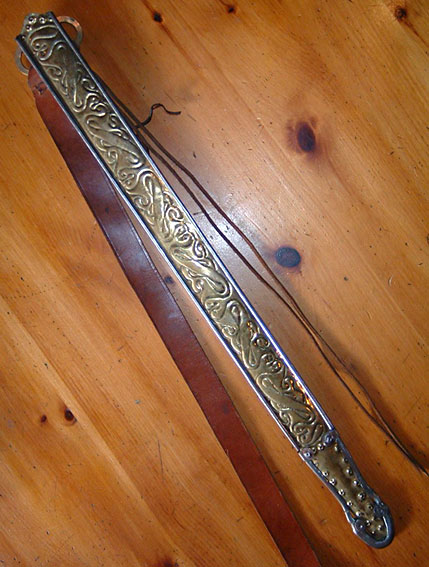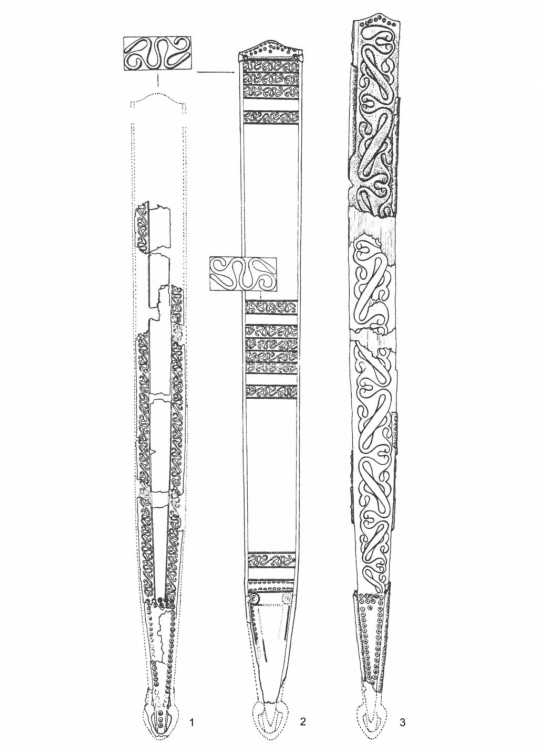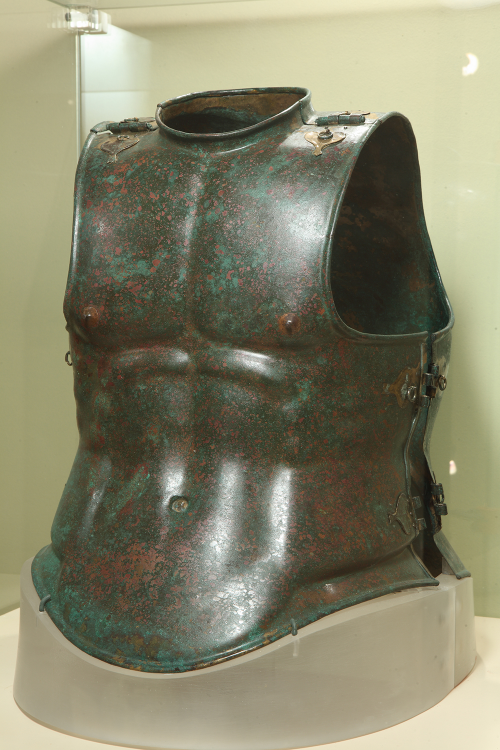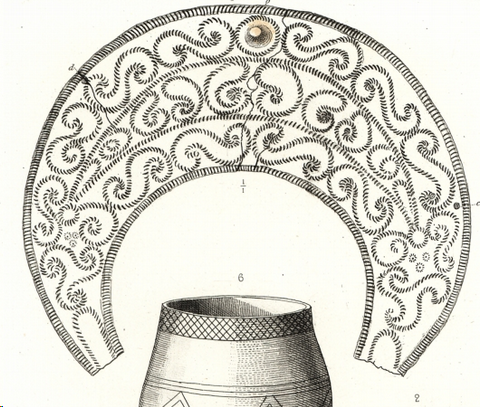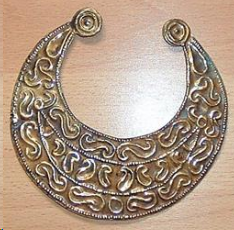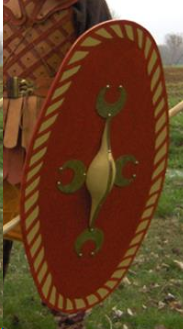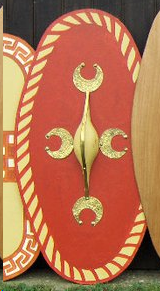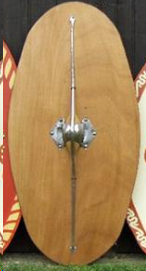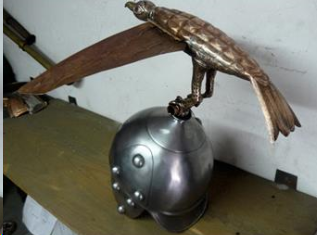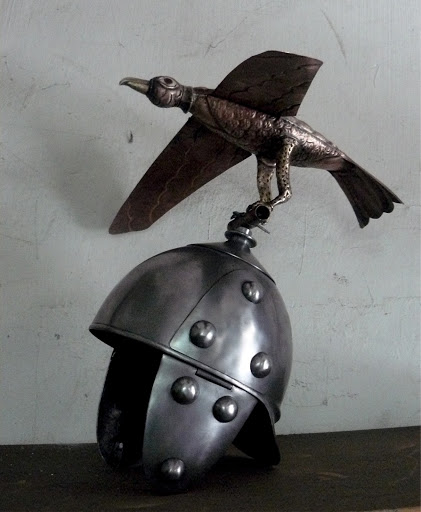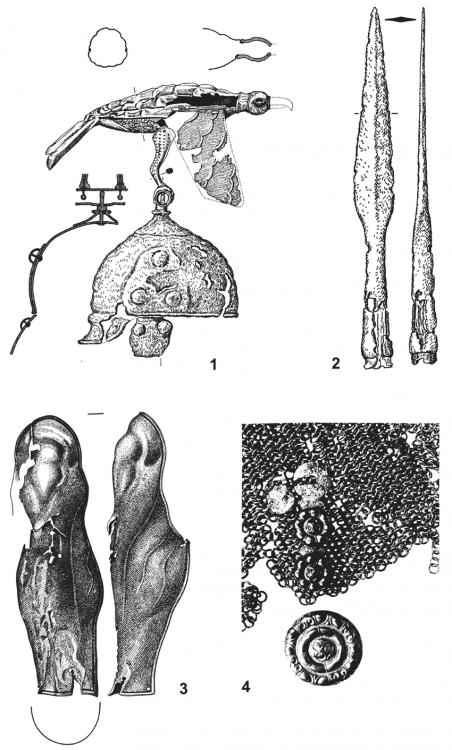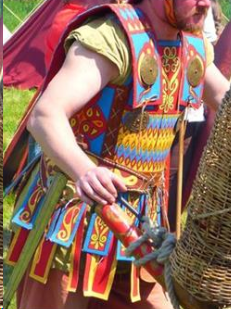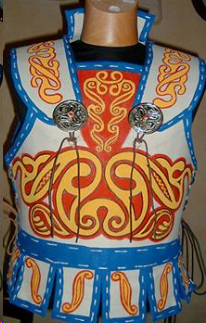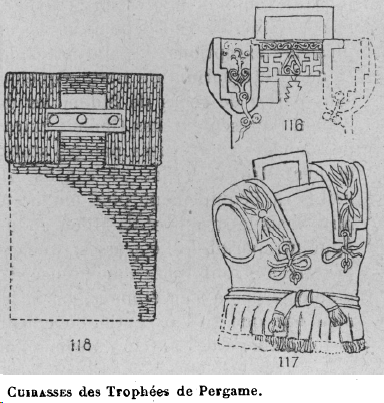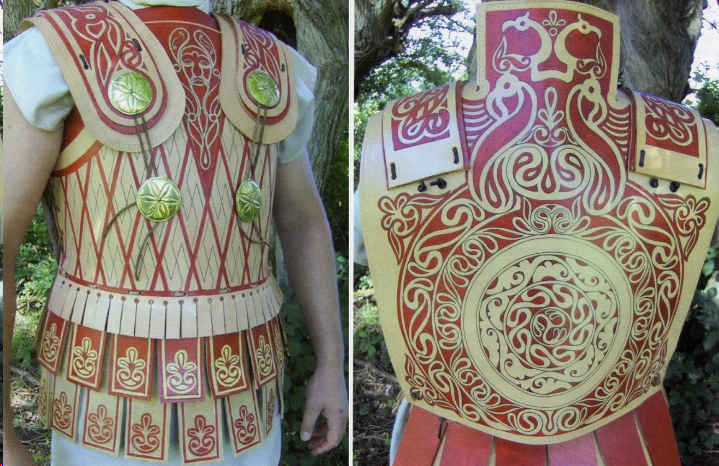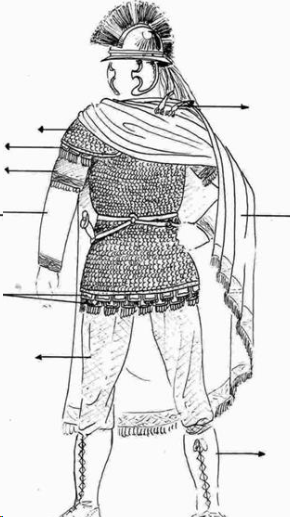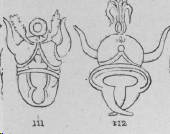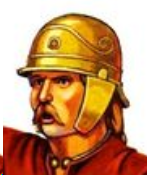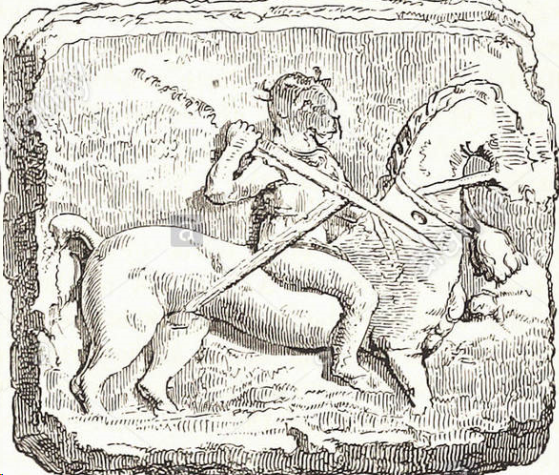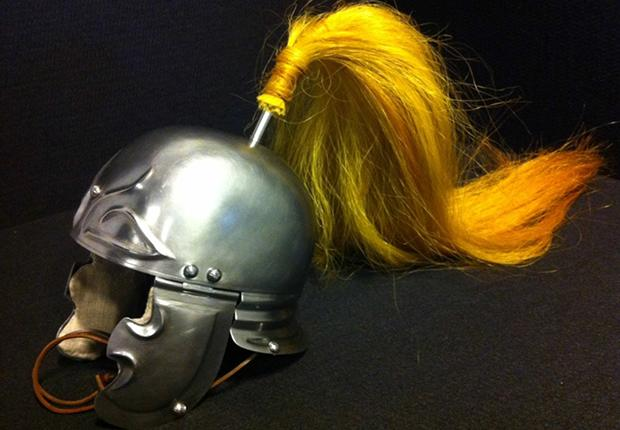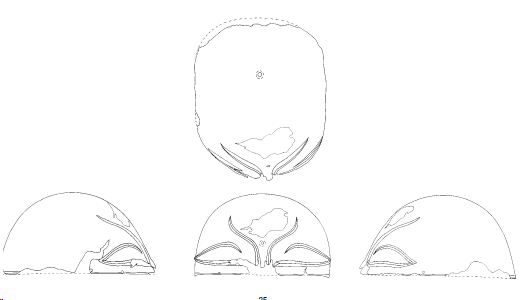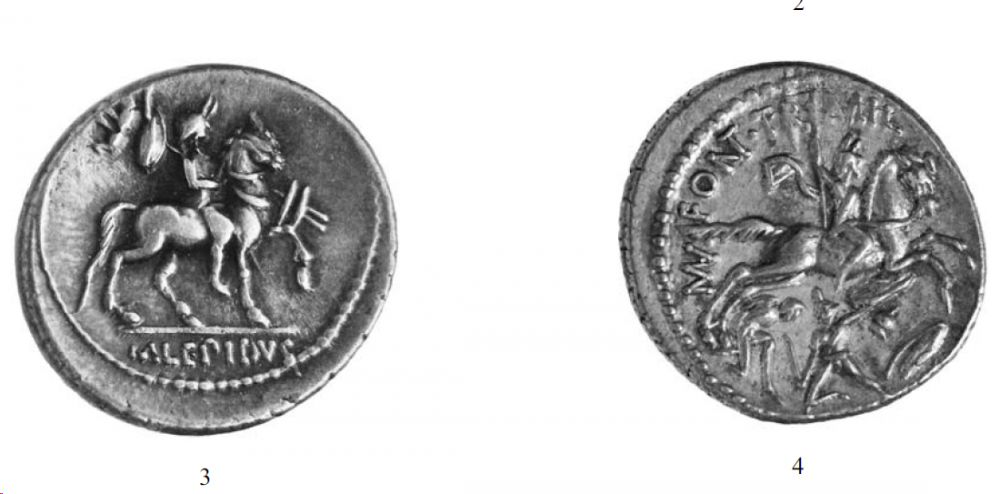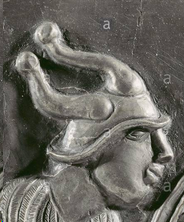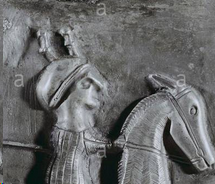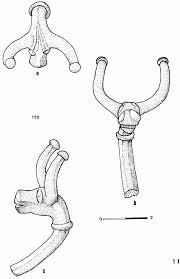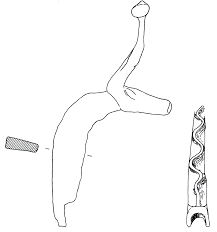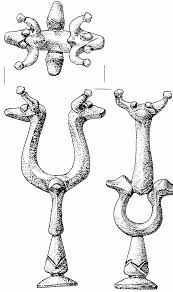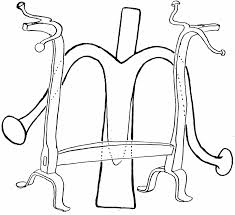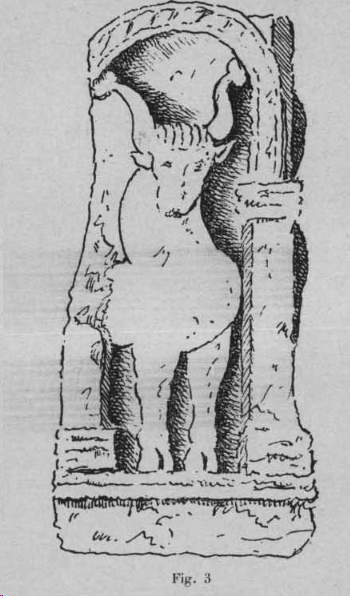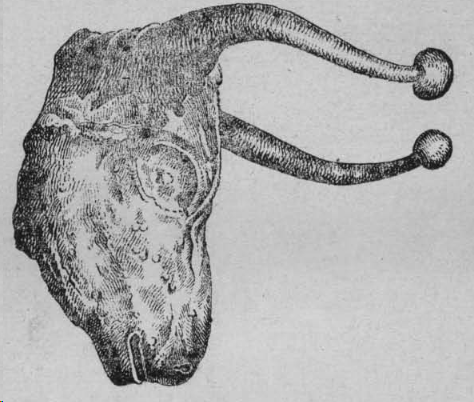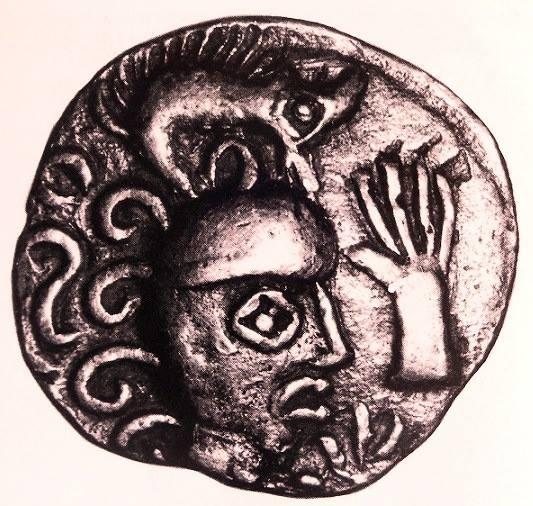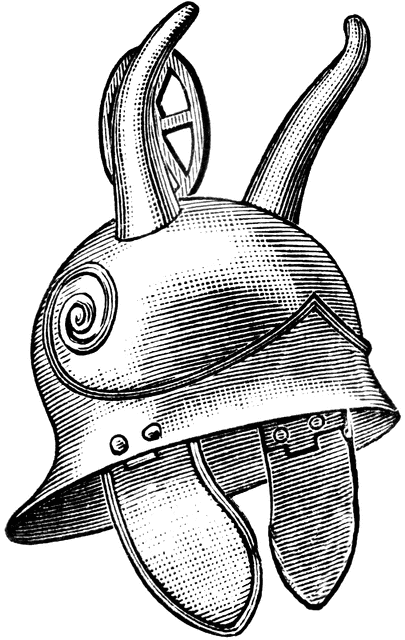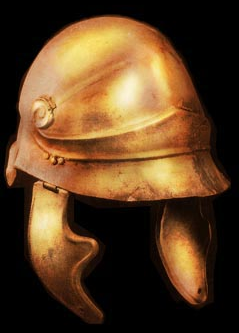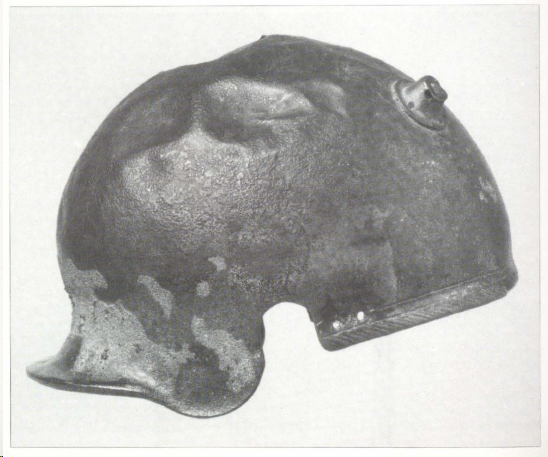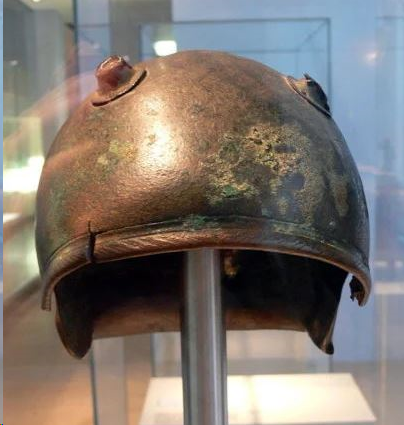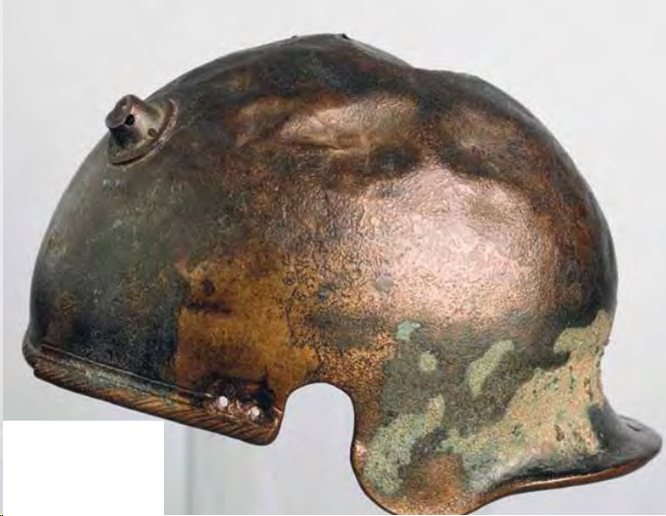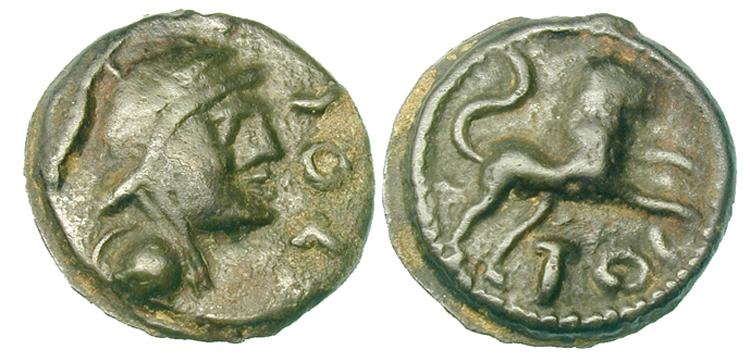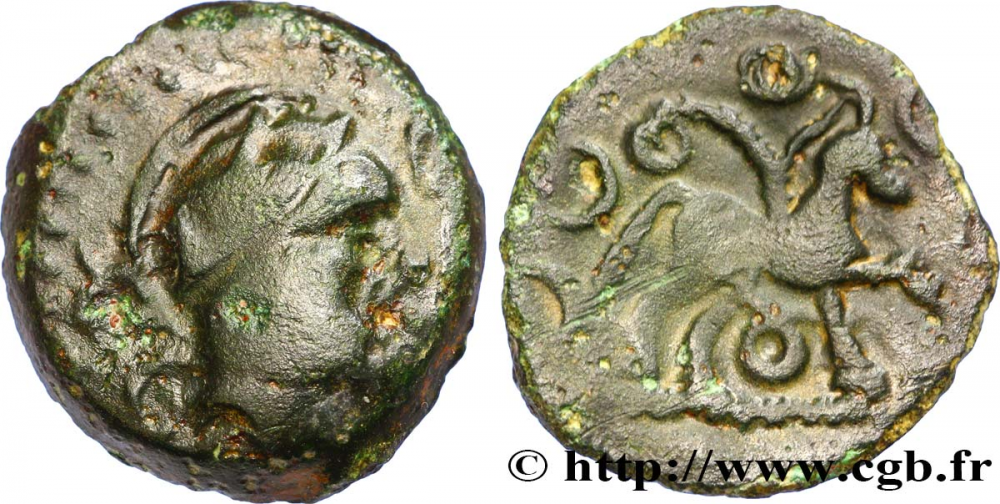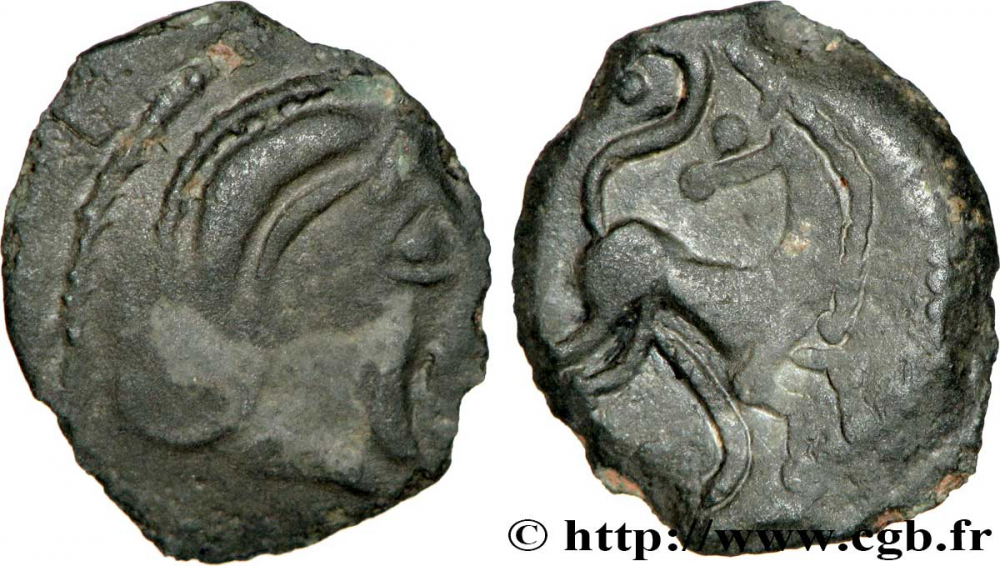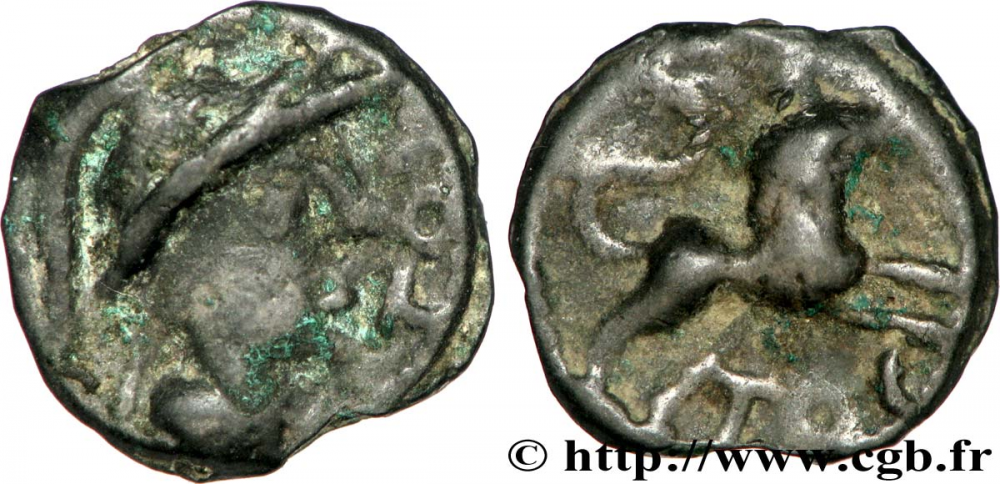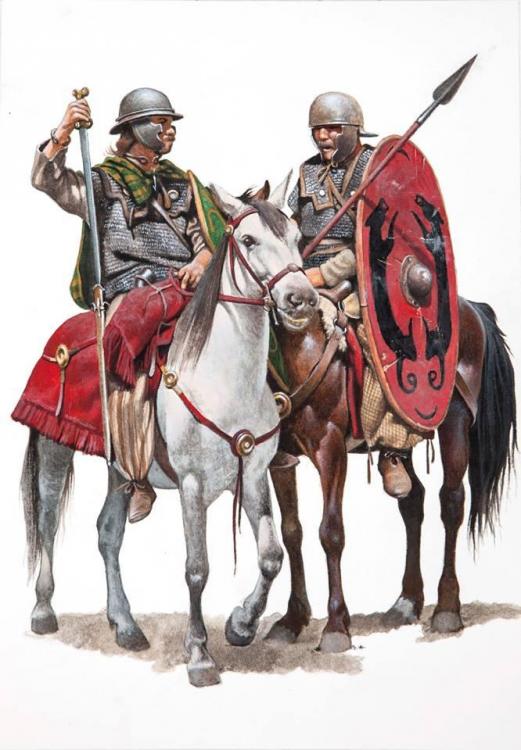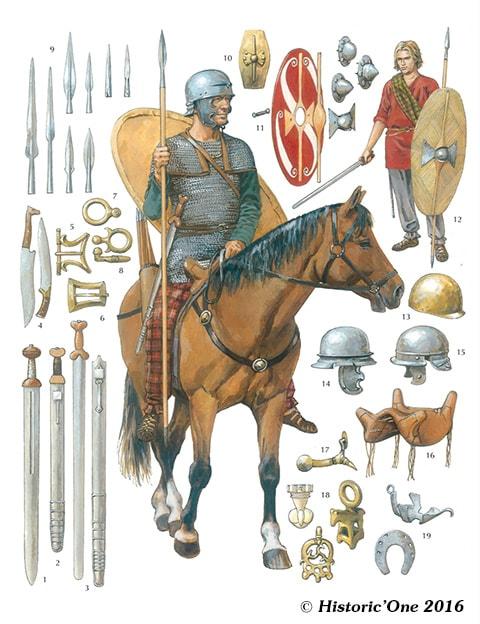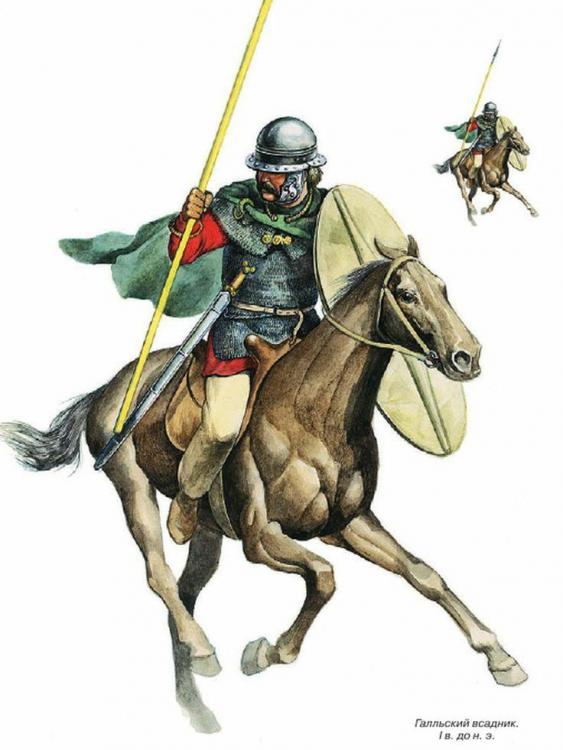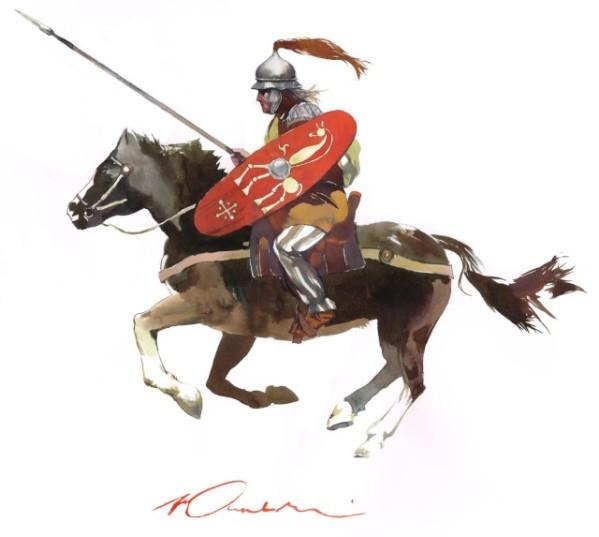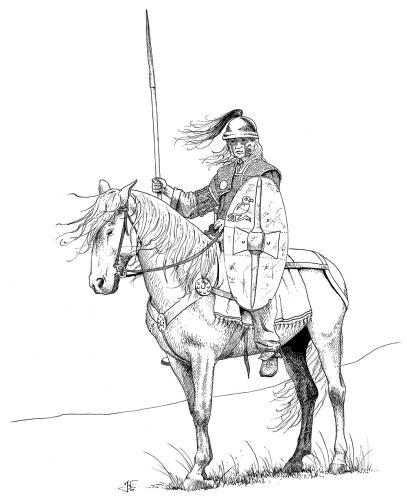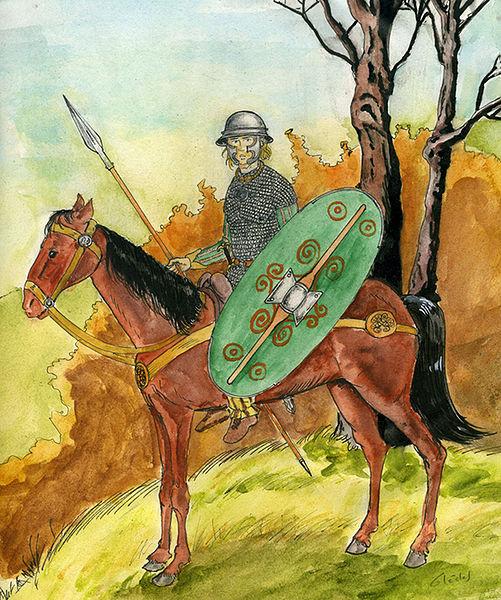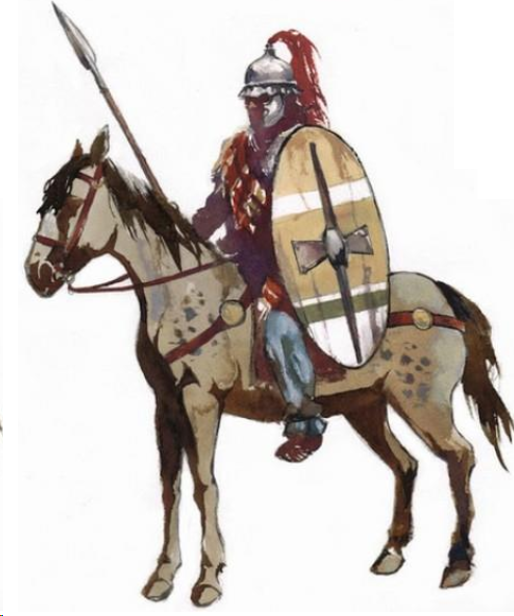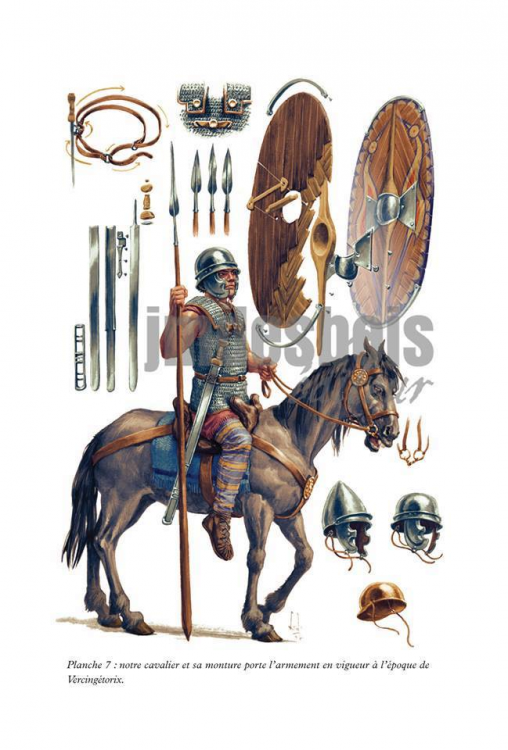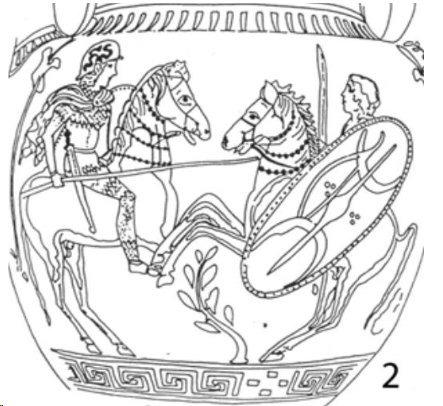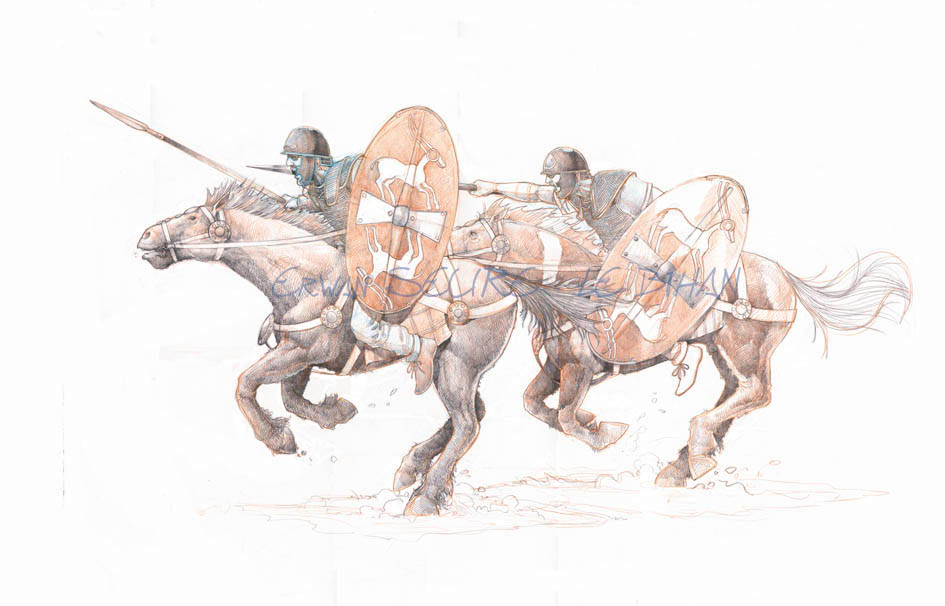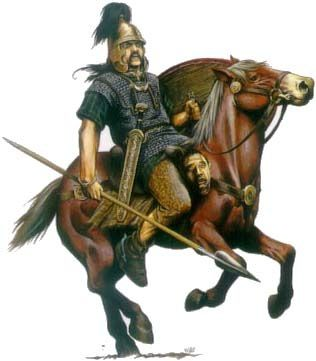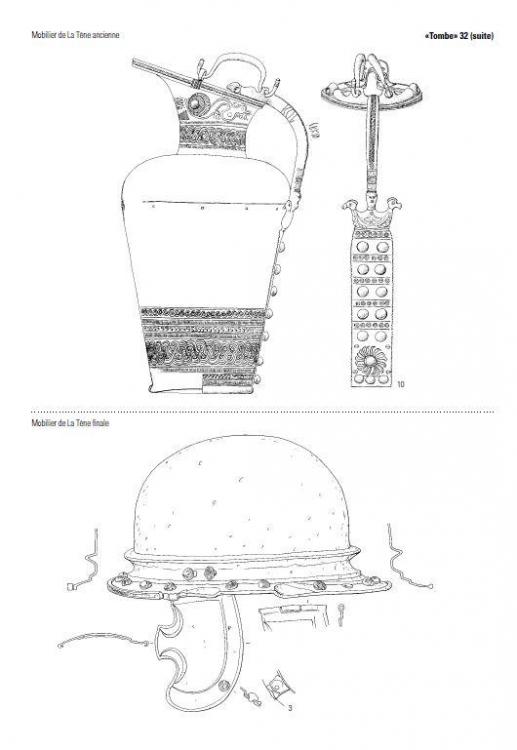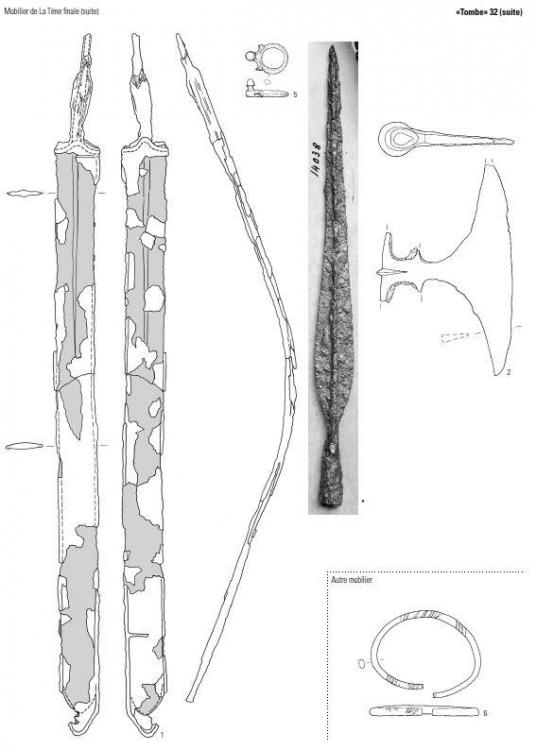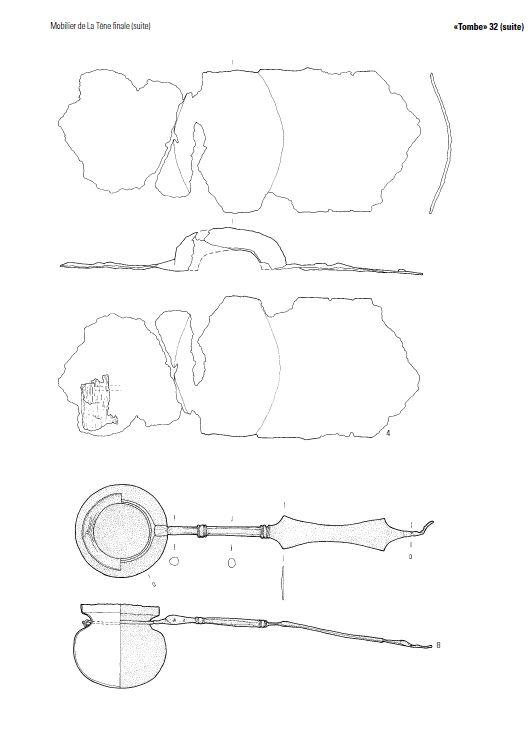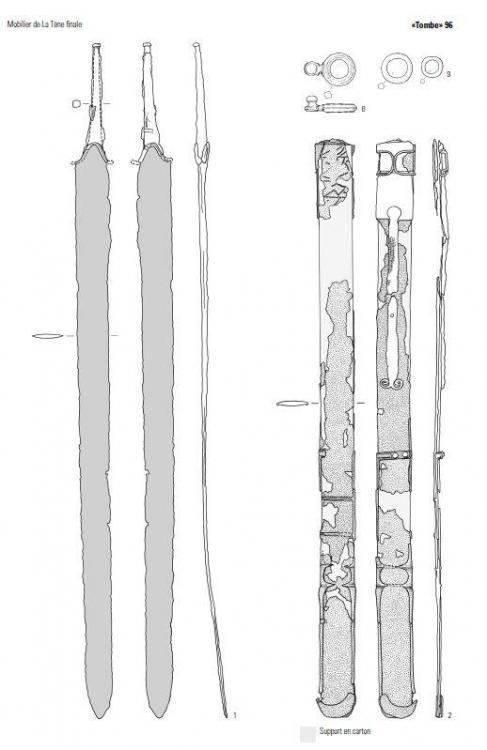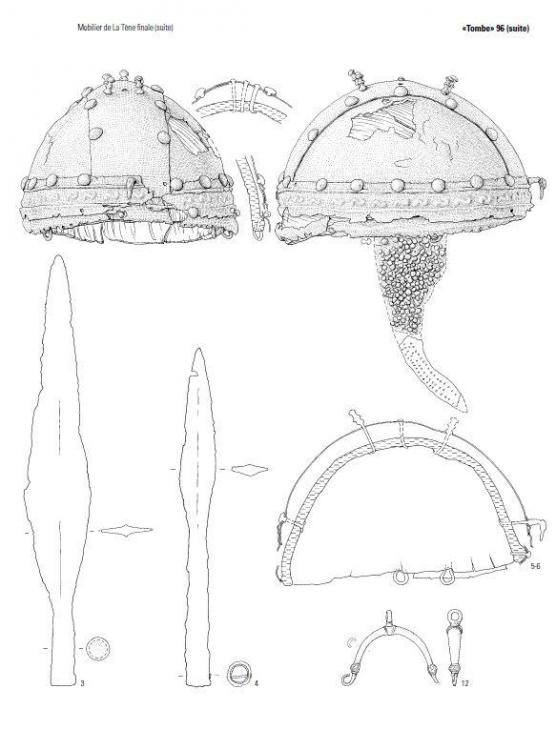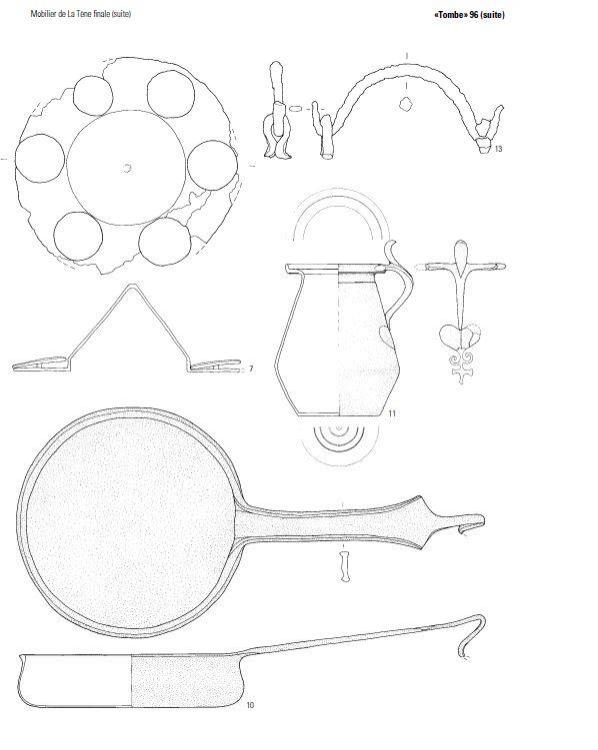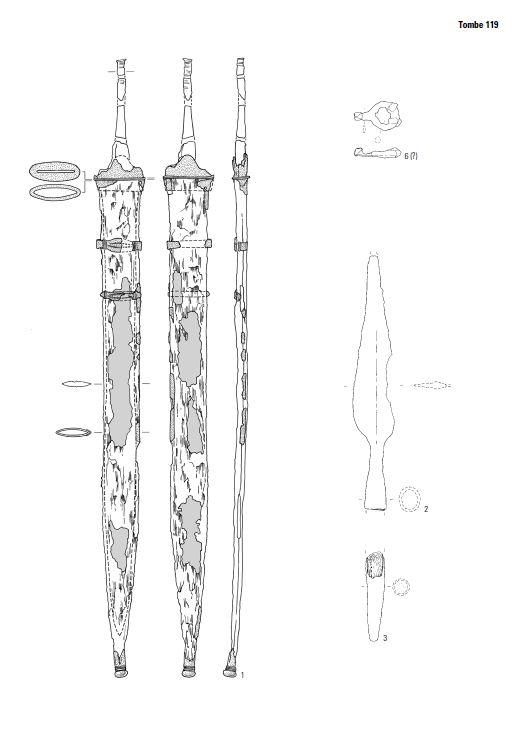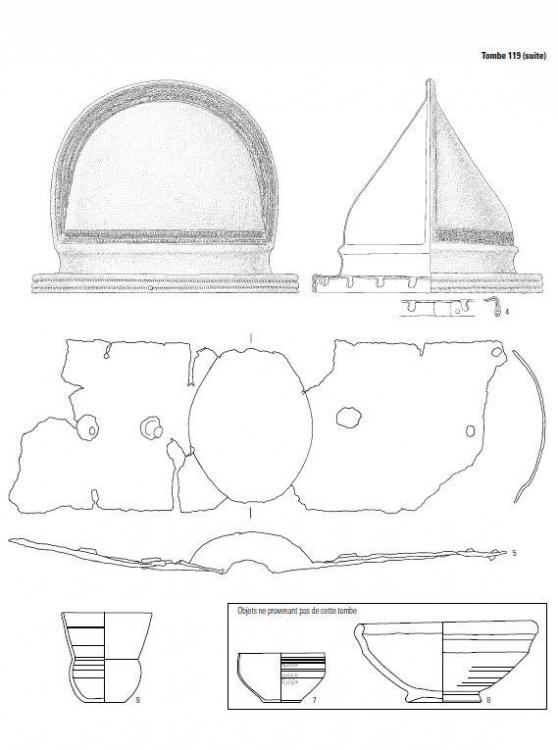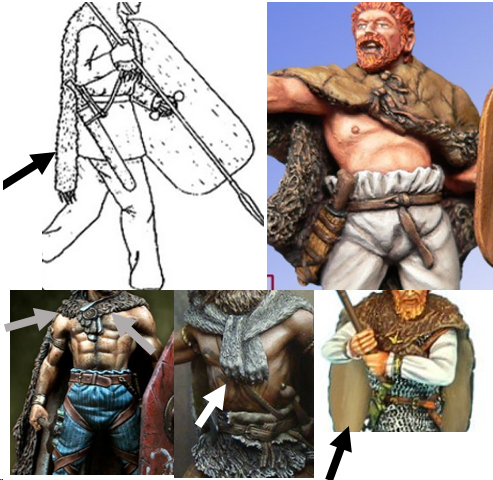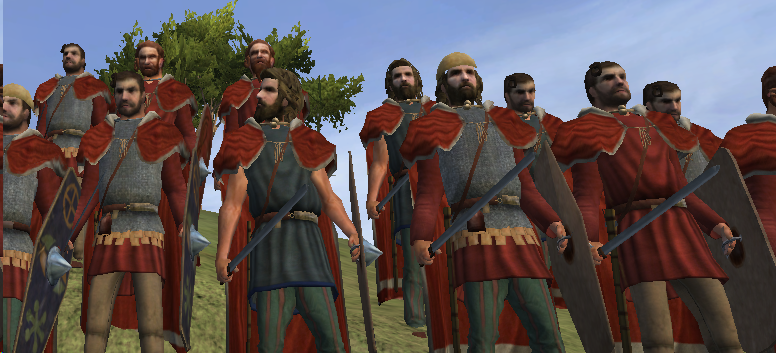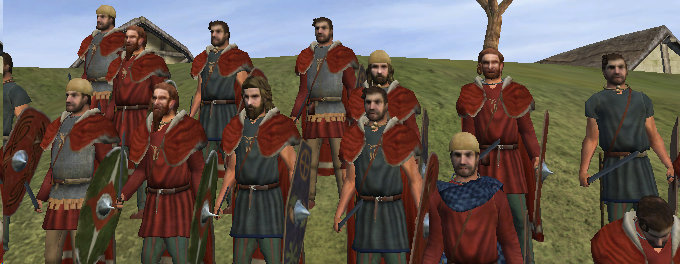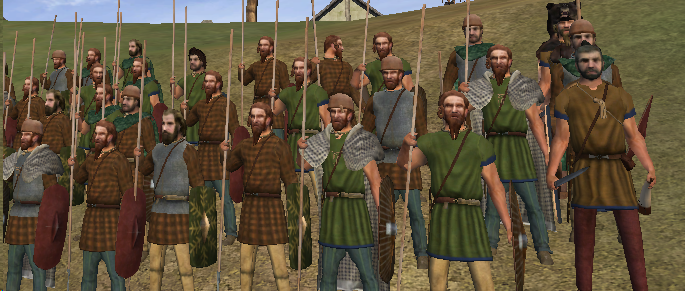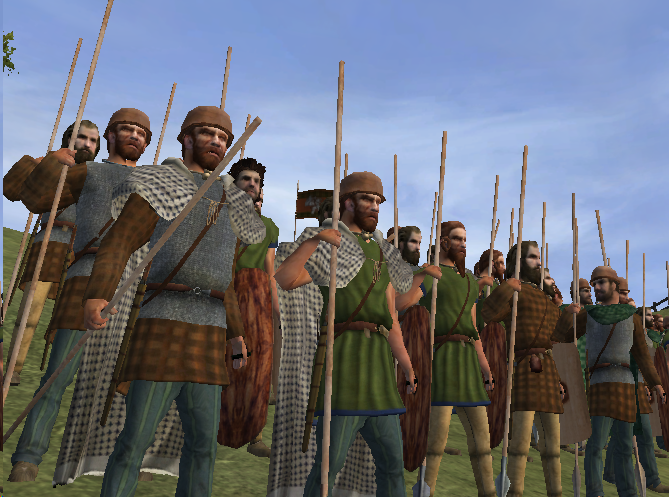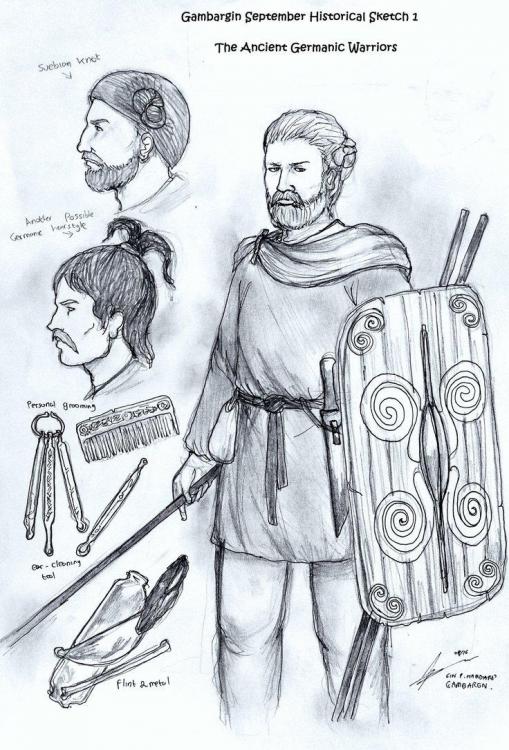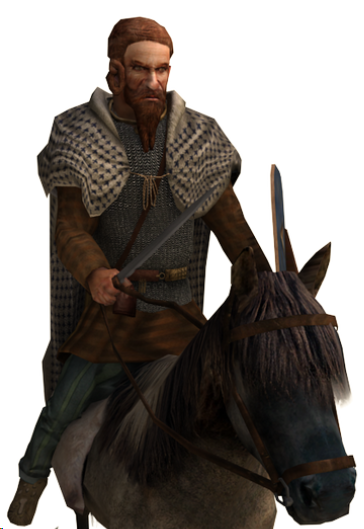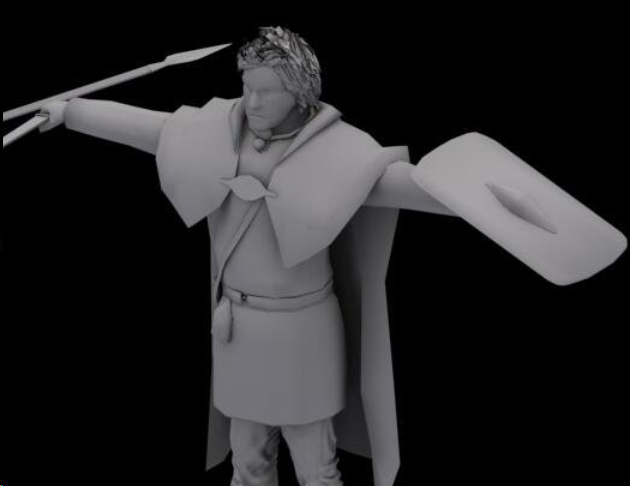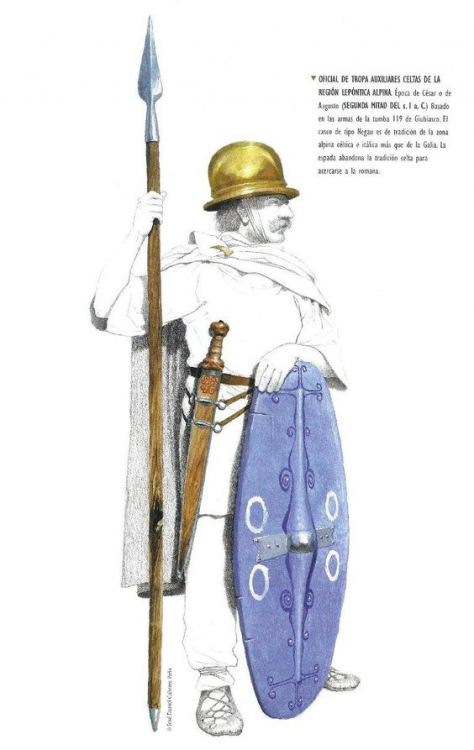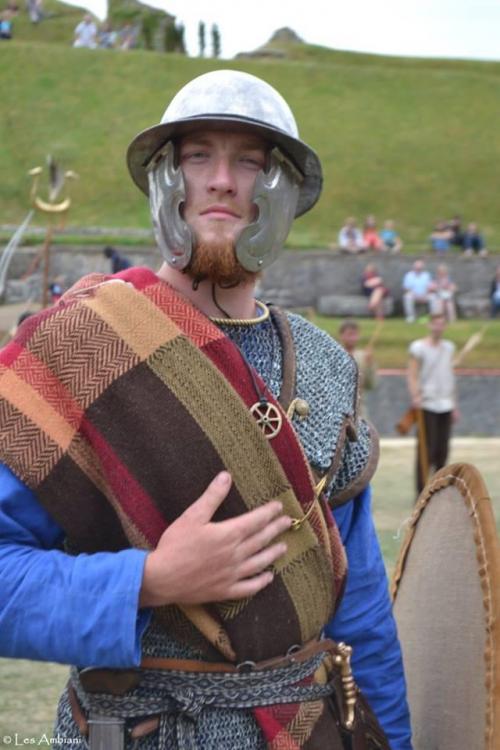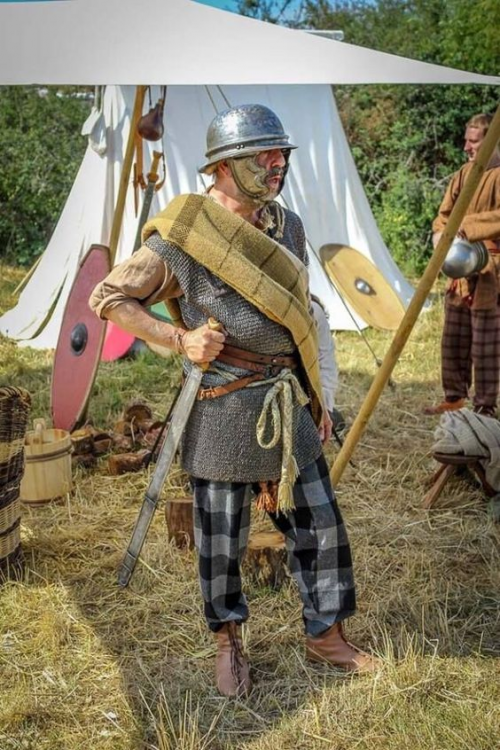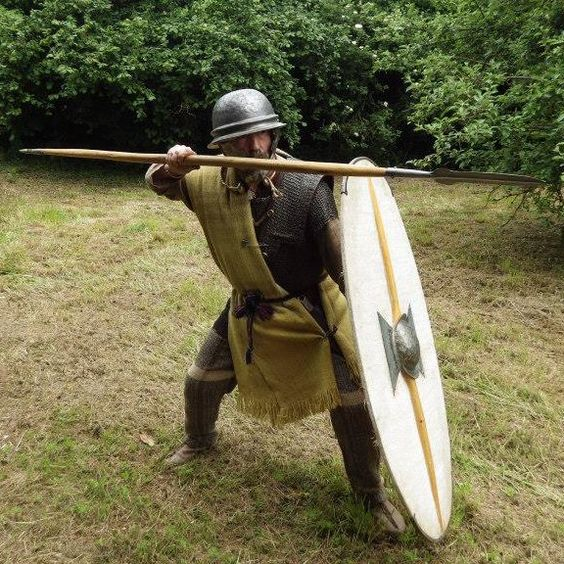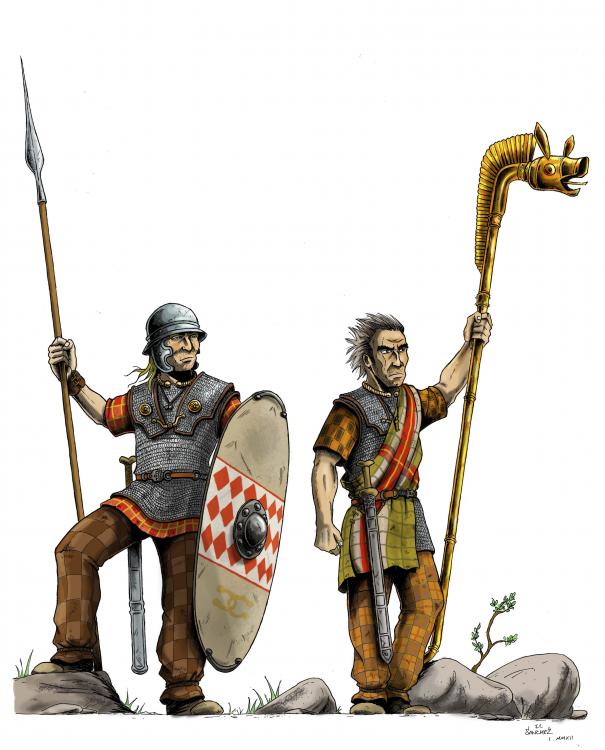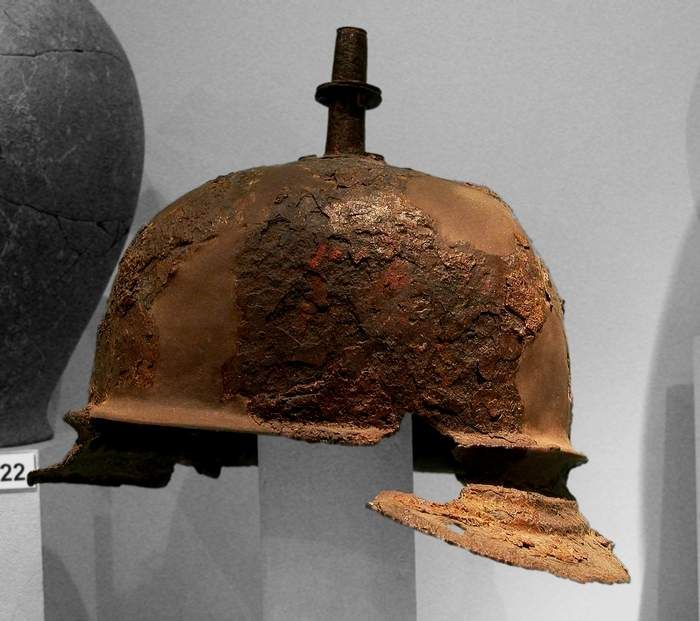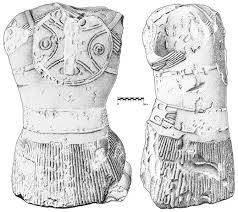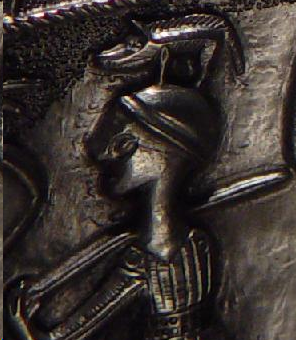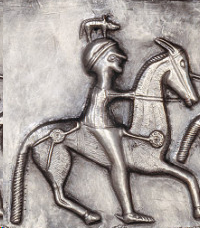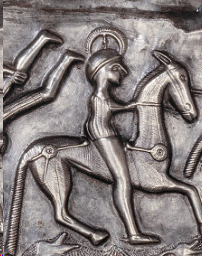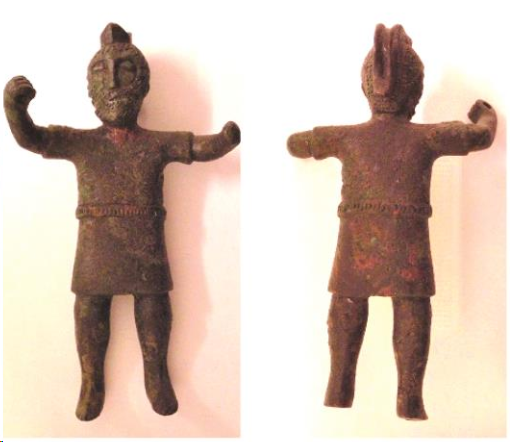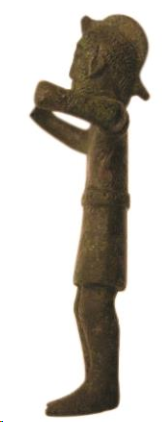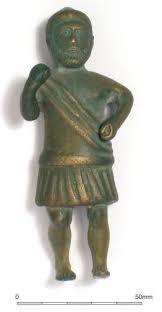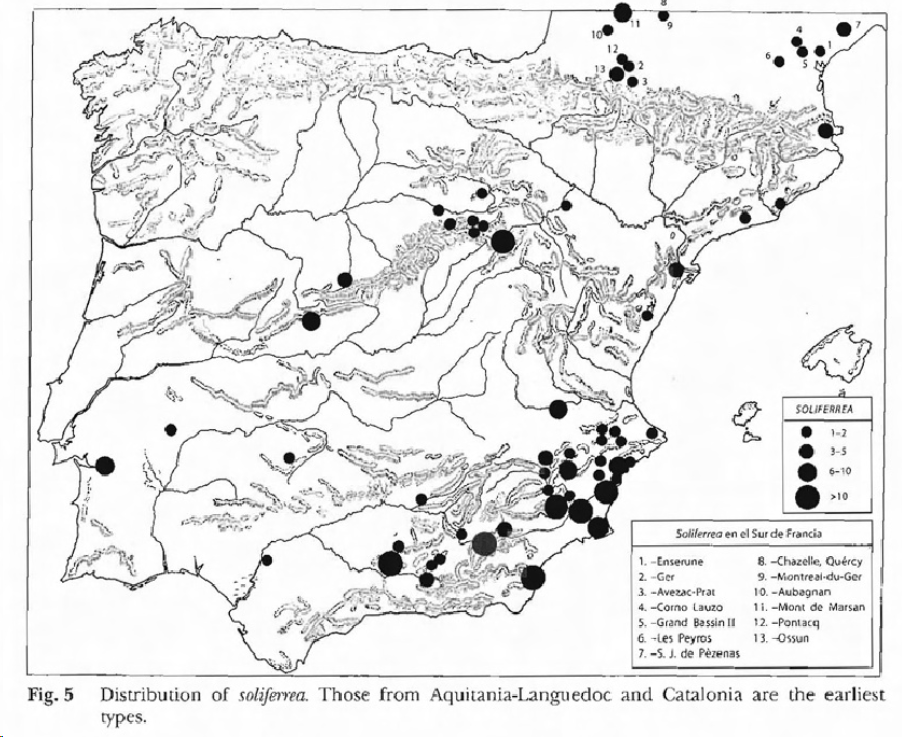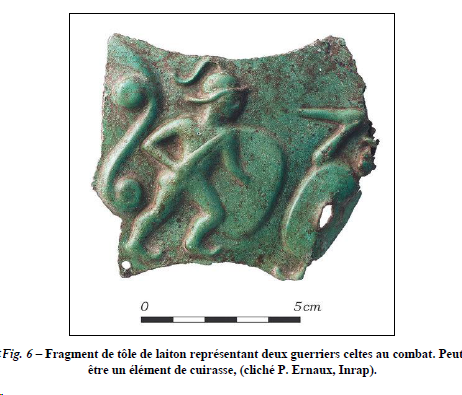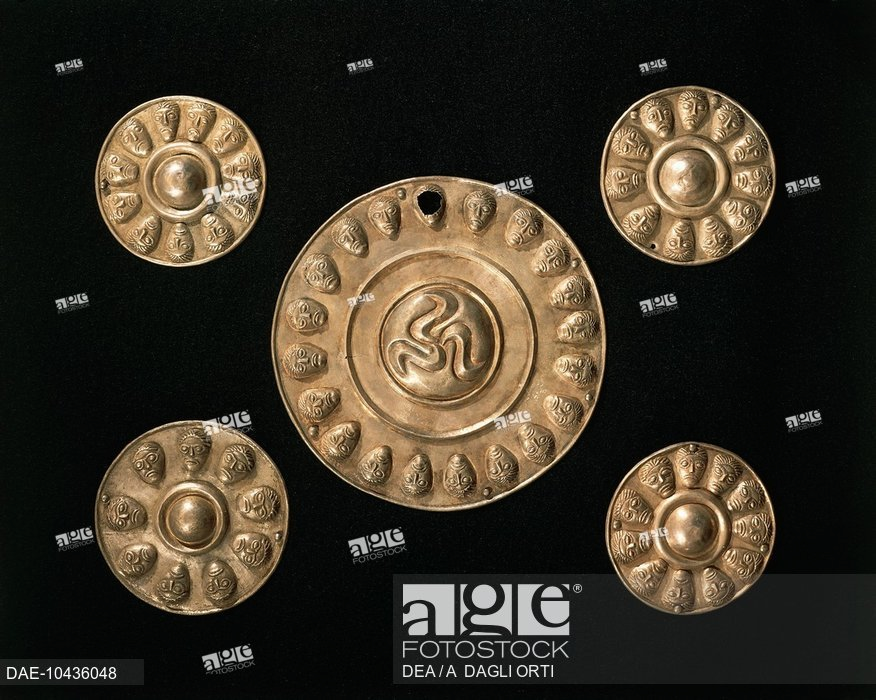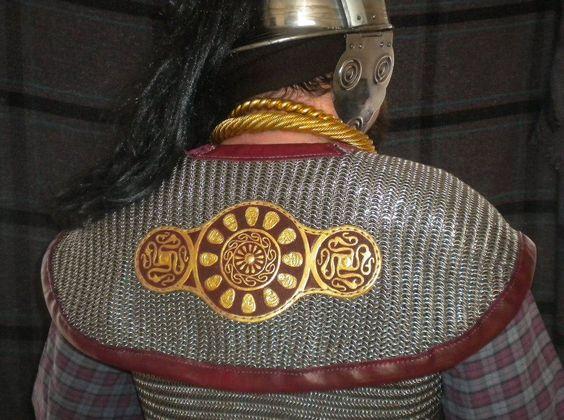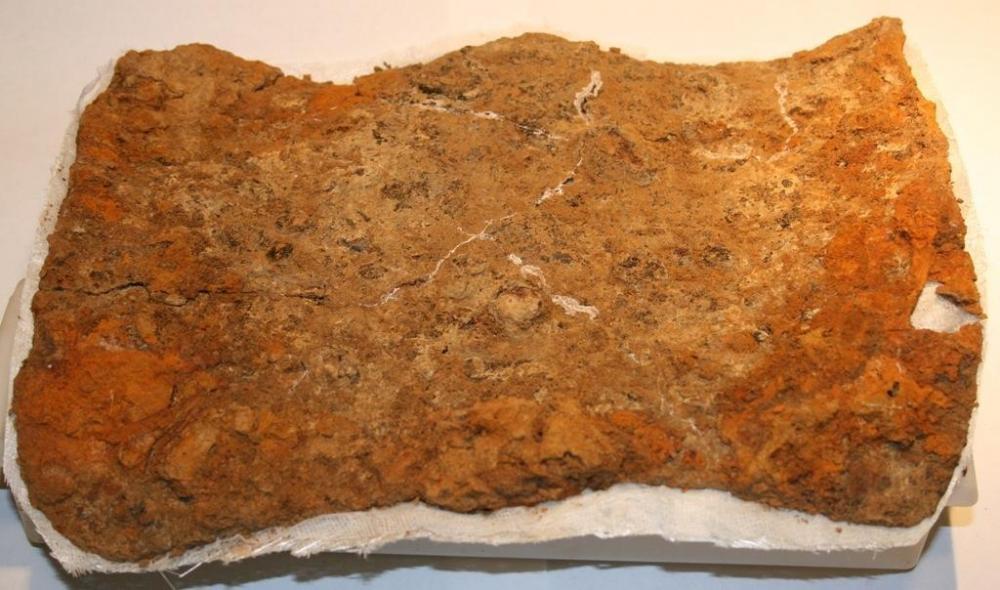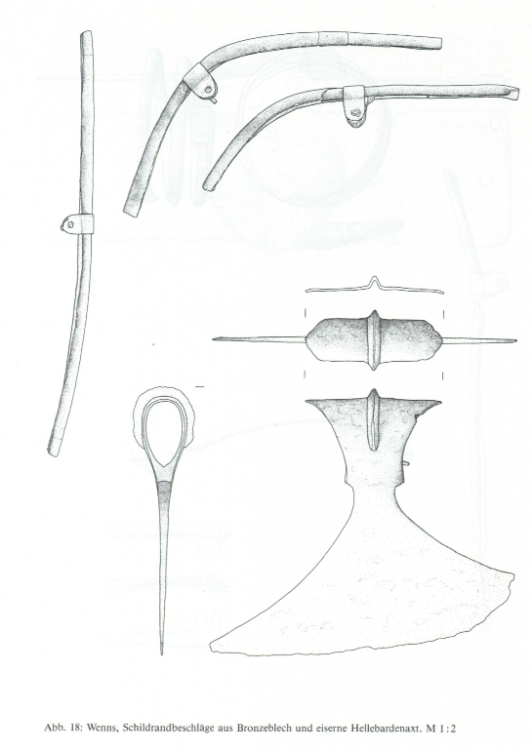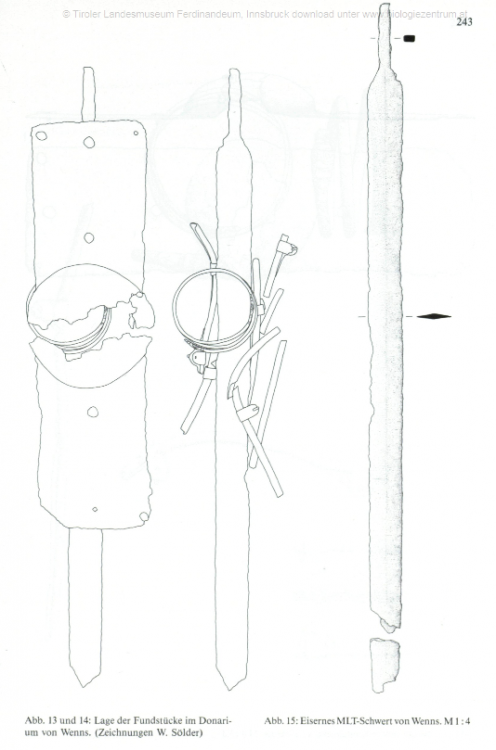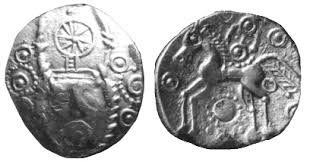-
Posts
2.401 -
Joined
-
Last visited
-
Days Won
82
Everything posted by Genava55
-
Clearly, yes. Shapes are shared by a lot of cultures. In fact the oval and ovalish shields are probably from the Italics and the Etruscans, and got adopted by the Celts during the 6th century BC at the end of the Hallstatt culture. Iberians started to use much more the oval shields because of the Carthaginian, Roman and Celtic influence. The thureos from the Greeks could come from an inspiration took from their experience with Italic and Celtic mercenaries during the 5th and 4th century BC and the following Gallic invasion in the 3rd century BC. The shield bosses are more distinctive between the cultures but some can easily be shared.
-
.thumb.jpg.b21ca1d0c15fb56b42c39b25a0a40815.jpg)
===[COMMITTED]=== Gallic Naked Warrior (Re-design)
Genava55 replied to wackyserious's topic in Completed Art Tasks
If it is possible to make an evolution for the Bariogaisatos: Basic => no helmet, different haircuts, cape or no cape, medium or tall shields. Advanced => Montefortino and ciumesti helmets, crested or not crested, cape or no cape, golden torcs, tall shields, shield bosses (umbo) Elite => Port, Mihovo and Foret helmets, crested or not crested, Cape, Golden torcs and armlets, tall shields, shield bosses (umbo) -
.thumb.jpg.b21ca1d0c15fb56b42c39b25a0a40815.jpg)
===[COMMITTED]=== Gallic Naked Warrior (Re-design)
Genava55 replied to wackyserious's topic in Completed Art Tasks
Nakedness from an Indo-European view is something common and is making reference to a kind of animality and natural force. Berserkir are often depicted as naked as well. Nakedness is often associated with homeric warriors and Greek art. 7th and 6th century hoplites are often represented as naked, notably by the Spartans and the Etruscans here, here and here (+bonus). Clearly, the thing has continued by being an artistic license but it seems that it has roots from an older ethos. Greek art, historiography and mythology are full of these archaisms about nakedness and furious warriors. Less known, exterior from the Indo-European world, some Assyrians warriors have been described as naked enraged warrior in the Tukulti-Ninurta Epic: “They are furious, raging, taking forms strange as Anzu (Assyrian eagle-dragon). They charge forward furiously to the fray without armor, They had stripped off their breastplates, discarded their clothing, They tied up their hair and polished… weapons, The fierce heroic men danced with sharpened weapons. They blasted at one another like struggling lions…” Nakedness in religious function is also known in India with the gymnosophists (as they were called by the Greeks). But in the case of the Wales mythology, it is making reference to youthfulness and to championship. Irish mythology shows that furious warriors can take any rights through their strength, even women and properties. Tacitus account of the Germanic Chatti suggest the same, where these warriors are sacred, start any battle and have the right to go where they want. In my opinion, fighting naked is a mean to access to higher position and higher recognition. Maybe it opens the right to enter the retinue of some nobles or some warrior brotherhoods. Probably it was something more common in youth peoples to start their warrior career. How much it is related to rituals and religion? If we look into the Germanic culture, there are rituals and rites before acting like a heroic warrior. Some kind of oaths to take in front of its comrades, an offering to do, an animal to skin or a dance to perform... there are indications for all of these. -
.thumb.jpg.b21ca1d0c15fb56b42c39b25a0a40815.jpg)
===[COMMITTED]=== Celtic Druid (Re-texture)
Genava55 replied to wackyserious's topic in Completed Art Tasks
@wackyserious If you want a variant for the Britons: And if you want variation for the head, you can use the bird helmet from Tintignac as a variant too. But for me, the druid is ok. -
.thumb.jpg.b21ca1d0c15fb56b42c39b25a0a40815.jpg)
===[COMMITTED]=== Gallic Naked Warrior (Re-design)
Genava55 replied to wackyserious's topic in Completed Art Tasks
If we consider them as fanatics warriors, they could be recruited from the sanctuary. It will fit nicely I think since the new sanctuary is more warlike than the current one. The auditorium/assembly should be a third phase building, permitting to recruit the champions, maybe carnyx too, new technologies etc. We know for sure thanks to Caesar that Gallic "senators" and aristocrats fought in the battlefield. It could be. The only thing is that this kind of building is something developed in the late phase of the La Tène culture, when it was in a urbanization stage. Thus a third phase building. While the Gallic naked warriors are known from the third century BC, before the urbanization, and it is expected to be a second phase unit in the game. Maybe the assembly/auditorium is better suited to unlock regional units (political alliance). -
.thumb.jpg.b21ca1d0c15fb56b42c39b25a0a40815.jpg)
===[COMMITTED]=== Gallic Naked Warrior (Re-design)
Genava55 replied to wackyserious's topic in Completed Art Tasks
Isn't it intended to be a special or champion unit? Did champion have upgrade too ? Anyway, regular or champion, both are okay. -
.thumb.jpg.b21ca1d0c15fb56b42c39b25a0a40815.jpg)
===[COMMITTED]=== Gallic Naked Warrior (Re-design)
Genava55 replied to wackyserious's topic in Completed Art Tasks
It depends on the reasons why you are naked. It is hard to know if it is a religious thing, a tradition, a habit or anything else. But anyway there are indications for both, with and without: -
.thumb.jpg.b21ca1d0c15fb56b42c39b25a0a40815.jpg)
===[COMMITTED]=== Horse Update 2.0 (Retexture)
Genava55 replied to Alexandermb's topic in Completed Art Tasks
Exmoor pony https://en.wikipedia.org/wiki/Exmoor_pony Mérens horse https://en.wikipedia.org/wiki/Mérens_horse In "The Horse in the Ancient World: From Bucephalus to the Hippodrome", chapter 3: "The argument that horses were transported during the Bronze Age from the continent to the British Isles predisposes the notion that these horses must have been domesticated as the idea of trying to bring wild horses across the Channel is ridiculous in the extreme! Undoubtedly the Celts who migrated to Britain from the Continent did import their local horses when they moved across the Channel. There are, however, some difficulties with the argument that all of the ‘native’ breeds are descended from these imported animals – particularly with regard to the Exmoor pony. Speed wrote: The Celts imported a small 10 hands high pony but it does not appear to have been pure-bred, because it had some of the characters of the eastern small pony and some characters of the southern horses. It is found buried in the graves of the Celtic settlements and was a somatic horse, but it obviously did not succeed in establishing itself in a wild state here, and its bones show evidence of diseases. Other Celtic period graves indicate that there were at least two types of horse living in Britain at this time. The graves from Blewburton included ‘a slender stallion of about 11 hands while the other was identified by Speed as the original British pony type’. It is not surprising that the Celts would have brought over their own native horse when they crossed the Channel. Why would they not? These were the animals they were familiar with that were tamed and trained in the style used by the Celts. It is also not unreasonable to assume that, upon settling into life on the British Isles, the Celts began to look at the native British Hill pony as a useful animal. Their imported horses were not well suited to the climate and fodder of the Isles, particularly in the moorland areas. The Continental horses would have lacked the physical adaptations of the British Hill pony. So the imported horses would have required more human assistance to survive. Their unsuitability for life in Britain does not mean the Celts would have abandoned breeding their imported horses. I think quite the opposite would have happened. The difficulty in keeping these animals would have made them all the more significant and valuable. The extra care required for their upkeep translated to a greater cost, thereby increasing the status associated with the owners of these horses. What about the native ponies of the British Isles? The logical answer is that the Celts began to make use of the local equine populations. Given the value of the imported horses they would not have been used for regular, everyday work or as a food source. Instead the Celts could turn to the native British ponies: they would have been comparatively inexpensive to keep. Crosses – whether through intentional breeding practices or otherwise – between the native ponies and imported horses must have occurred creating yet another type, the optimal specimen of which would have carried the best qualities of both types. As Baker correctly states, The Celts began the practice of importing animals to the British Isles and in the case of horses and ponies, it was to continue throughout history. Man quickly found that the genetic flexibility which had served the horse family so well in its natural history provided a wonderful basis for animal husbandry." For the burial of the horsemen at Gondole, the horses and geldings have a height of the withers between 118 and 130 centimeters: https://s3.amazonaws.com/academia.edu.documents/42692831/Inhumations_de_chevaux_chez_les_Arvernes20160215-6751-duv84f.pdf?AWSAccessKeyId=AKIAIWOWYYGZ2Y53UL3A&Expires=1551018501&Signature=6m0W87orCPzUD0ONq5cGsi3aNYU%3D&response-content-disposition=inline%3B filename%3DInhumations_de_chevaux_chez_les_Arvernes.pdf Here a diagram of distribution of the height of the withers (horizontal axis) from the horses remains found in two places in France: Caesar, Book 4, Ch2 : "Merchants have access to them rather that they may have persons to whom they may sell those things which they have taken in war, than because they need any commodity to be imported to them. Moreover, even as to laboring cattle, in which the Gauls take the greatest pleasure, and which they procure at a great price, the Germans do not employ such as are imported, but those poor and ill-shaped animals, which belong to their country; these, however, they render capable of the greatest labor by daily exercise. In cavalry actions they frequently leap from their horses and fight on foot; and train their horses to stand still in the very spot on which they leave them, to which they retreat with great activity when there is occasion; nor, according to their practice, is any thing regarded as more unseemly, or more unmanly, than to use housings. Accordingly, they have the courage, though they be themselves but few, to advance against any number whatever of horse mounted with housings. They on no account permit wine to be imported to them, because they consider that men degenerate in their powers of enduring fatigue, and are rendered effeminate by that commodity." => it seems to be corroborate by the finds of >140 centimeters horses during the 1st century BC among the Gauls -
.thumb.jpg.b21ca1d0c15fb56b42c39b25a0a40815.jpg)
Antiquity Expert's Main Thread
Genava55 replied to Anaxandridas ho Skandiates's topic in General Discussion
Maybe all of you should differentiate the part where it is about helping and the part about debating. Conflictual talk is common and not necessary a problem when it is for the sake of the debate, but in this case it is maybe getting out of hand because the stakes are high. I suggest you to remember that any of your choices are good enough for the public. Even modern Greeks won't notice the difference I think. Only people with a scholar level in ancient Greek could. Anyway, a transliteration is something mandatory problematic because a part of the information is lost or corrupted. Even in the ancient times transliteration of ancient Greek wasn't perfect. And if there is something I am sure about, it is that experts are difficult to satisfy. Remember it is a game and by essence it is impossible to really portray a culture in a perfect way in this media. I think historical accuracy is more a matter of how you want the players to remember the cultures that you are portraying. How you broke cliché, how they learnt a different view and how will remains their imaginary about these ancient cultures. Thus if you want to debate and to get a consensus, remember that the stakes are not that high. Try to take some pleasure on the process of debating and exchanging knowledge before to worry about the final result. More humility and less taunting are the first steps to a healthier debate. -
Arrian comments on the exercise of the Roman cavalry (hippika gymnasia) "Besides, I am not unaware that it will be difficult to explain every word, for most are not even Latin names, but some are Iberian or Gallic, when they are Gallic practices that the Romans have appropriated, Gallic cavalry having in their eyes a strong reputation in battles. Indeed, among other things, it is for this reason also that the Romans are worthy of praise: they did not content themselves with their own ancestral customs but retained everywhere what was good and appropriate it. Thus we realize that some have borrowed weapons (and today they are called Roman because the Romans have particularly well used), others military exercises, the chairs of their judges and the dress lined with purple. Borrowing from other peoples even gods, they honor them as if they were their own. At least their rituals, it is said, are still performed today, for some, according to the usage of the Achaeans, and for others following the common usages of all Greeks. Some rituals are even Phrygian." "It is at this point that good horsemanship is especially needed to be able simultaneously to throw at those who are charging in and to give one's right hand side the protection of the shield. When riding parallel to his target, the rider must swivel himself to the right in order to throw; when making a complete about-turn, he must throw in the matter called, in the Gallic tongue petrinos, which is the most difficult of all. For he must turn right round as far as the tenderness of the sides will allow, to face the horse's tail, so as to throw backwards as straight as possible, and having done so, he must quickly turn forward again and bring his shield to cover his back, since if he turns without getting protection, he exposes a vulnerable target to the enemy." "They advance first with pikes leveled in defensive style, then as though they were overtaking a fleeing enemy. Others, as if against another enemy, as their horses turn, swing their shields over their heads to a position behind them and turn their pikes as though meeting an enemy's assault. This maneuver is called in Gallic toloutegon. Also they draw their swords and make a variety of strokes, best calculated to overtake an enemy in flight, to kill a man already down, or to achieve any success by a quick movement [along] from the flanks. Nor is this all: they demonstrate in as great a variety as possible, the number of shapes and forms which can be given to the act of leaping on a horse. Finally they demonstrate how a man wearing his armour can leap onto a horse when it is running. Some call this the 'wayfarer's jump'." "And every man called must answer: "present! Hearing his name shouted aloud, and immediately pushing his horse, armed with three spears. He must shoot first towards the target by placing himself at the end of the land whose land has been turned over, the second from the stand itself, while the horse continues to march straight ahead, and the third, he does things according to the rules and as the emperor prescribes them, while the horse rotates to the right, on another target, set up expressly on the order of the emperor to receive the third lance. This is the hardest pitch of all, as it is done before the horse has completely terminated its maneuver, while the movement itself is being made. It is indeed the launch that is called xunèma, in Gallic language, that he must execute, and which is not easy to achieve with a javelin without iron."
-
-
What could be interesting for the Britons is the possibility to carry the "groupe IV" swords on the back, something nice to add for the Batoros unit:
-
The Ewart Park and Llyn Fawr phases are a reminiscent bronze age period where the bronze weapons are becoming less and less popular. By 500 BC, there is very very little chance that bronze swords were still in use. Especially because the 6th and 5th century were a period of strong transition to the iron age with clear cultural influence from the continent. More precisely, it is the time where iron daggers were adopted and accepted by the natives: http://sci-hub.tw/https://doi.org/10.1017/S0079497X0001608X http://sci-hub.tw/https://www.cambridge.org/core/journals/proceedings-of-the-prehistoric-society/article/swords-and-scabbards-of-the-british-early-iron-age/678467ECA9E12B38ACBF6D35F9BD835C This blade comes from the Marne and Champagne regions in France. It is one of the birthplace of the La Tène culture, where we see the transition between a local iron age culture influenced by Hallstatt to a fully expression of its own culture that will spread and become La Tène during the 5th century. The phases of this transition have their own denomination, Jogassien (530 - 475) and Marnien (475-400). If 0 A.D. is focusing on the time period between 500 to 0, why including the Hallstatt culture that is disappearing during the beginning of this timespan? By 450 BC, the Hallstatt is ended. As you pointed out, the Hallstatt C is ending around 600 BC. Hallstatt D is the next phase and during this, the daggers are becoming more popular than the longswords.
-
De rien, j'avais pas compris que c'était ça ton problème ;-) Moi aussi la première fois j'avais pas trouvé tout de suite.
-
Ctrl+clique souris sur le bâtiment ennemi. Ca switch entre capturer et attaquer.
-
Salut, je suis pas un bon joueur, ni un régulier mais je vais essayer de répondre sur un point. En général le mieux c'est de détruire parce que ça te coûte moins d'hommes et tu n'as pas le risque de faire une action inutile en laissant l'IA recapturer les bâtiments après t'avoir repoussé. Si tu captures une caserne, regarde si tu as des hommes à soigner, tu les fous dedans un petit moment mais après ça tu détruis le bâtiment. Mais capturer les forteresses et les tours ennemies peut se révéler une tactique efficace si c'est murement réfléchi et planifié (faire ça à l'arrache non). L'IA a toujours la même façon de réagir, c'est juste une suite d'algorithmes. Capturer une forteresse pendant une attaque peut être une stratégie pour épuiser les hommes de l'IA. Tu captures le bâtiment, tu fous une dizaine d'hommes dedans, tu gardes de la cavalerie et des javeliniers en retrait, tu provoques l'IA pour qu'elle vienne attaquer la forteresse et tu contre-attaques quand elle a plus de soldats. D'ailleurs tu peux aussi profiter du fait que l'IA cherche à capturer tes bâtiments dans une partie. Tu les utilises pour lui faire perdre du temps et des hommes.
-
An example of a very problematic subject about horned helmets in Roman relief, the Glanum monument. It is a cenotaph (memorial) of three peoples having won the citizenship under the Roman army (but maybe a generation before the three peoples deceased, through their father). Monument dated between 30 and 20 BC. It is why Europa Barbarorum choose to represent veteran legionaries with horned helmet too: https://www.deviantart.com/tuxalin/art/Horned-helmet-with-mask-601415722 https://www.youtube.com/watch?v=ioqSlJbgnK0
-
I did some research for more diversities for the heroes. Italic bronze cuirass, small possibility of a borrowing in Italy but uncertain. Horned helmets seems to be possible but there are clear confusion from the Romans about Gauls, Galatians and Germans and about the helmet type (Greek helmets everywhere in their relief, even too old models). I am still skeptical on the horned helmet uses and I prefer a use for the Epouanos unit but it depends of your opinion. For Vercingetorix, I think a crested-helmet is the better option, not the horns or the wheel. Brennos design: Britomaros/Viridomaros design: Uercingetorix (do not forget that Vercingetorix was close to Caesar before the revolt, he was his "contubernalis") -------------------------------------------------------------------------------------------------------------------------------------------------------------------------------------------------- Gallic third phase champions design - A help to picture these Gallic elite cavalry from the Late La Tène period (1st century BC) - Suggested name: Comaterecos (Patrician, Senator or Magistrate); Uerouicos (victorious warrior, great fighter); Adscoros (attendant, retainer); Donnoconios (noble warrior, noble fighter). Description => Alesia, Mihovo, Boé, Port or Foret helmet / Trousers / Cape / Chain mail / Heads / Long shield with shield boss and orle protection Lepontic axeman - Suggested name: Namantobogios (smasher of enemies). Description => Port, Alesia, Negau or Ticino helmet / Trousers / Cape / Chain mail or Leather cuirass / one-handed axe / Long shield with shield boss and orle protection Celtic and Germanic swift cavalry - Suggested name: Epouanos (horse-killer); Uerouicos (victorious warrior, great fighter). Description => Foret, Port (Kessel), Coolus, Germanic or horned helmet. / Trousers / Tunic or thick tunic / Celtic cape or Bear cape / No shield or Medium shield or Shield on the back / Long lance (Special ability against cavalry? or javelins as a secondary weapons? many ideas possible) Aquitanian champion swordsman - Suggested name: Soliduros (Bodyguard, watcher) Description => Alesia, Boé or Mihovo helmet / Trousers / Cape / Chain mail and phalera / Long shield with shield boss and orle protection
-
Personally I agree. The distinction between fortress, hillfort, citadel and fortified city is not clear and most of the historical examples does not fit in these categories uniquely. They overlap each others. Moreover, a place like the Ptolemaic Berenike fortress was not only a defensive structure but also a structure with markets, workshops, ports and monuments. It acted like a political entity representing the authority of the Ptolemies.
-
Thick fabrics (woven or not woven) is the only one attested for sure. Pliny specify that both the Parthians and the Gauls use felted fabrics tremped in vinegar, which is able to resist a blade or fire (a bit exagerated but it is plausible). Moreover Polybius says during the battle of Telamon that the non-naked Gauls are protected against javelins by their tunic. There is a Parthian find: https://www.metmuseum.org/art/collection/search/325987 Scythians use felted fabrics for various things: https://flextiles.wordpress.com/2017/10/16/scythians-warriors-of-ancient-siberia-at-the-british-museum/ https://www.apollo-magazine.com/art-diary/scythians-warriors-of-ancient-siberia-british-museum/?map=active Padded armor seems to be a thing for the Roman Imperial Era: https://www.reddit.com/r/AskHistorians/comments/70fz17/did_roman_legionnaires_wear_gambeson_under_their/ No worries, I am busy as well. Good luck with your courses.
-
.thumb.jpg.b21ca1d0c15fb56b42c39b25a0a40815.jpg)
===[COMMITTED]=== Celtic Unit Helmets
Genava55 replied to Alexandermb's topic in Completed Art Tasks
This Coolus is the Mannheim version, known to have been used by Caesarian legions and auxiliaries. Thus it is a bit out of the frame for the Polybian era. This helmet was found in Britain as well, probably a Celtic auxiliary. But the other Coolus type is very possibly used by Roman legionaries during the second century BC.

